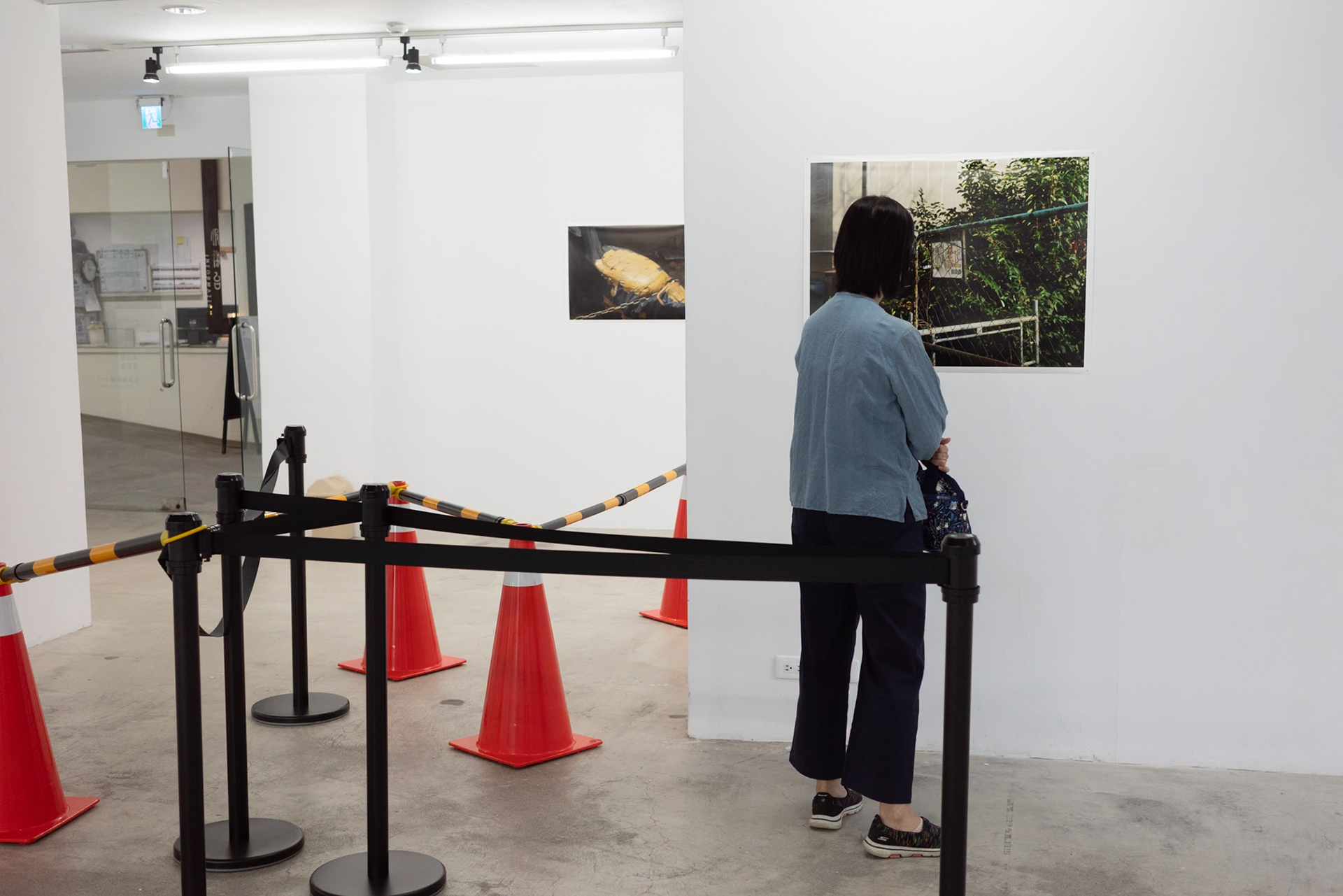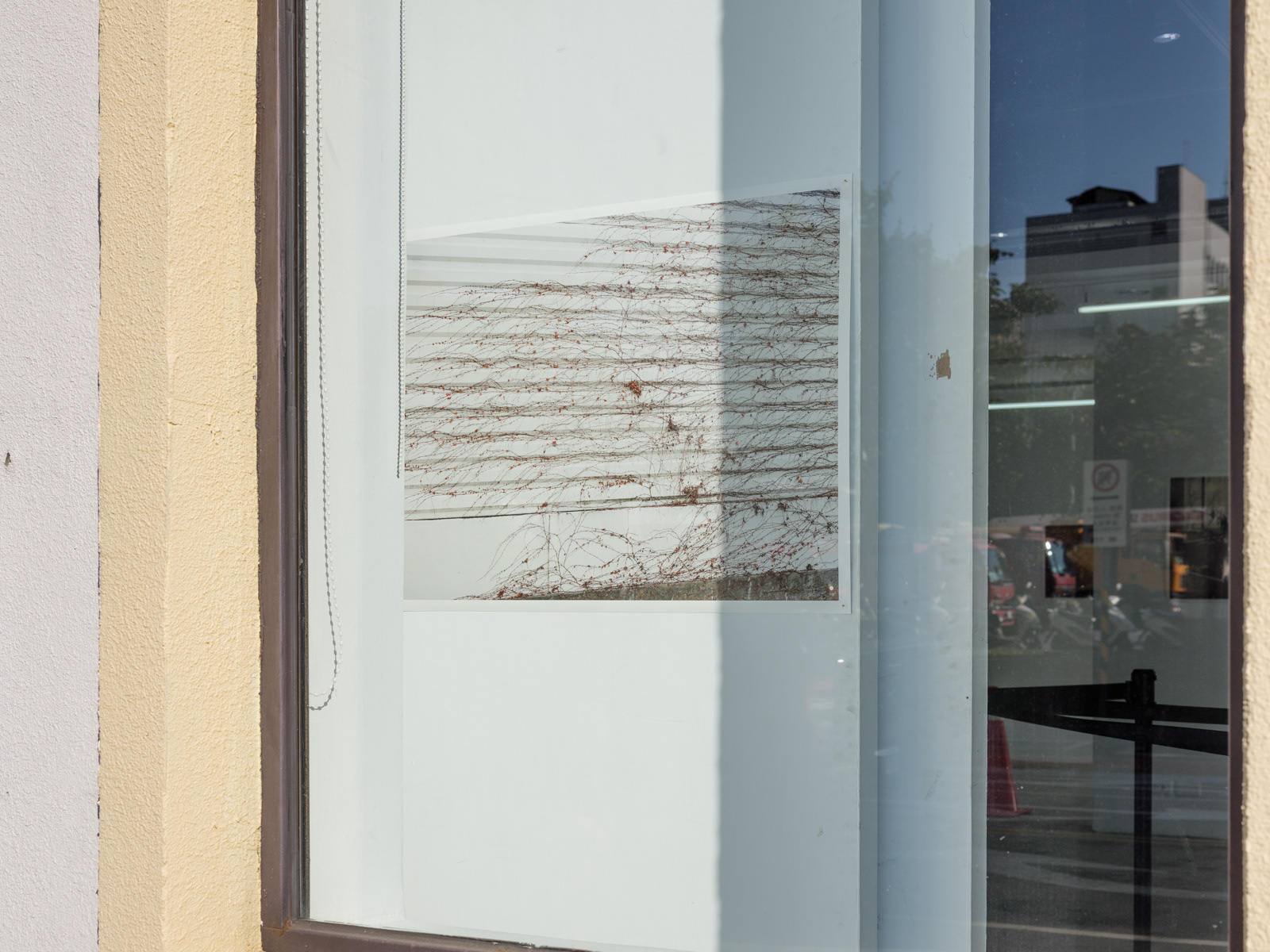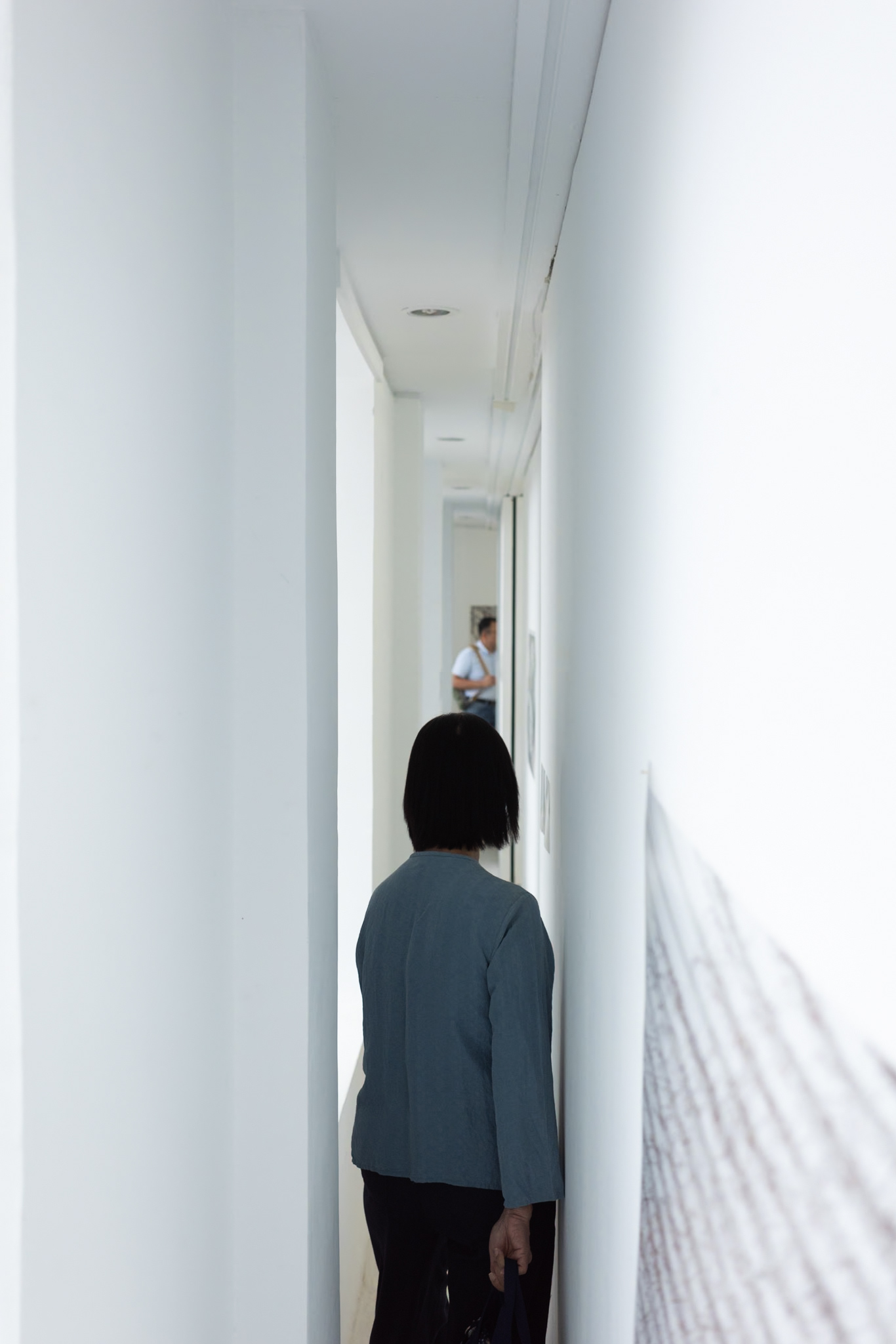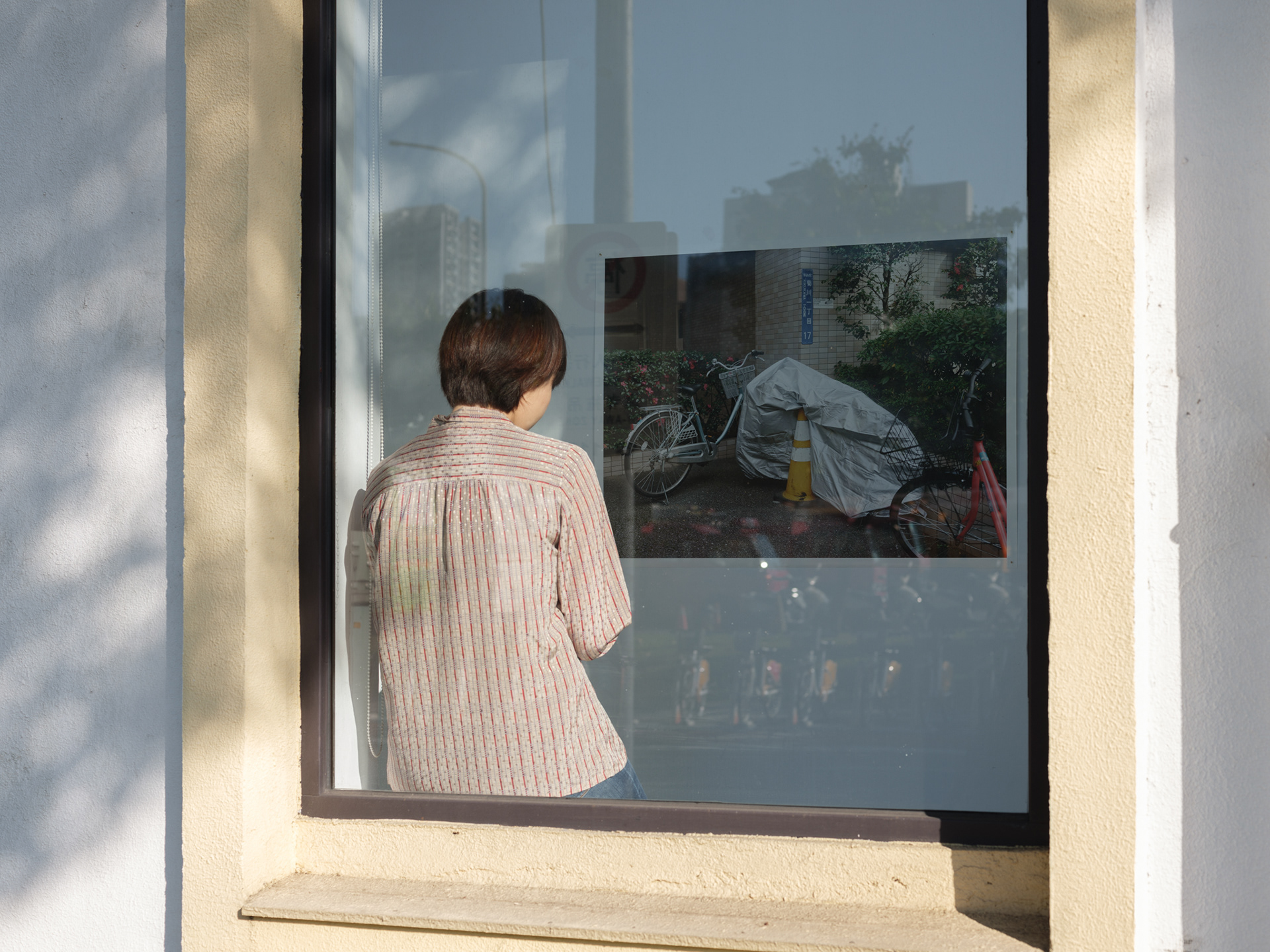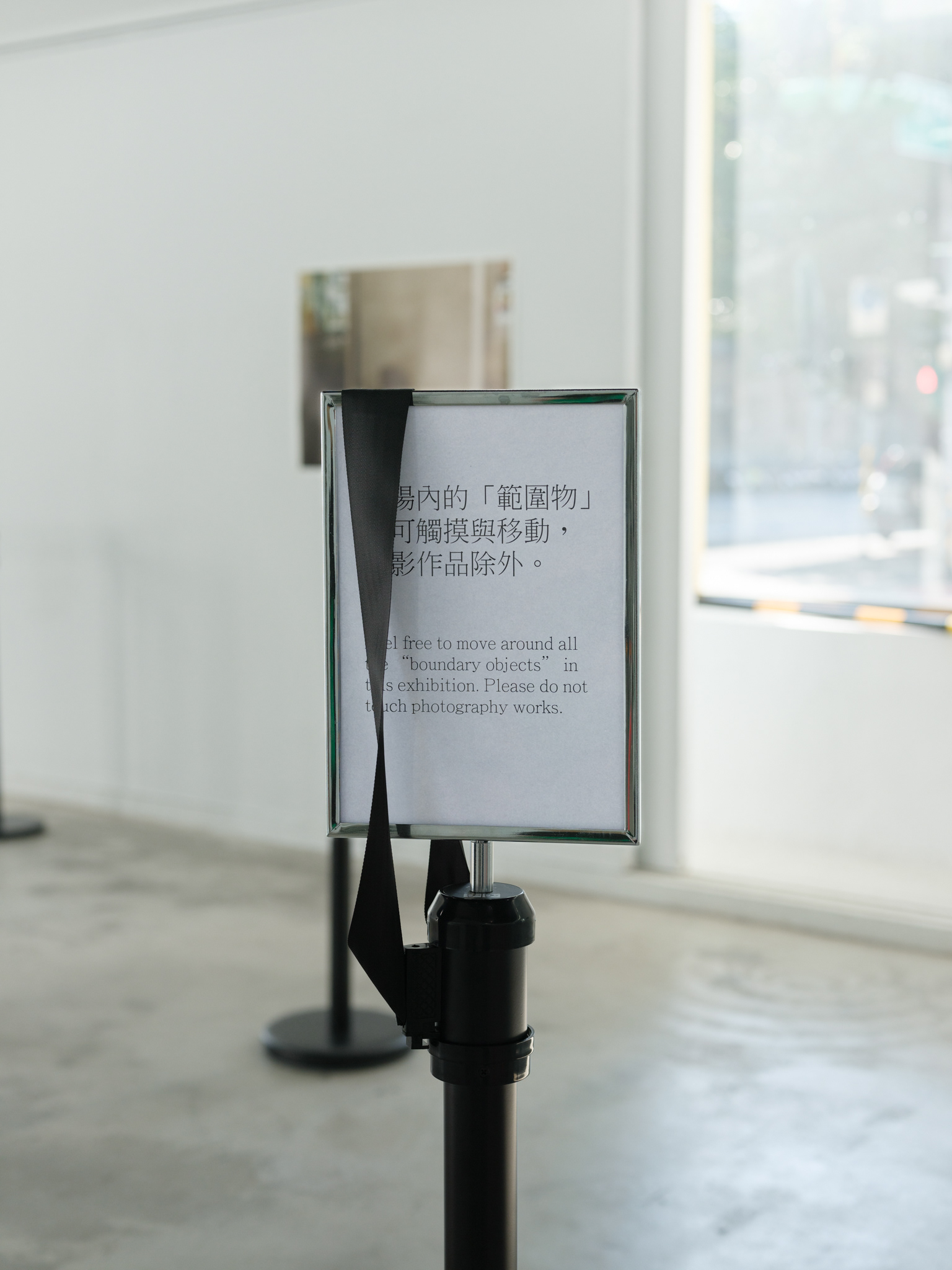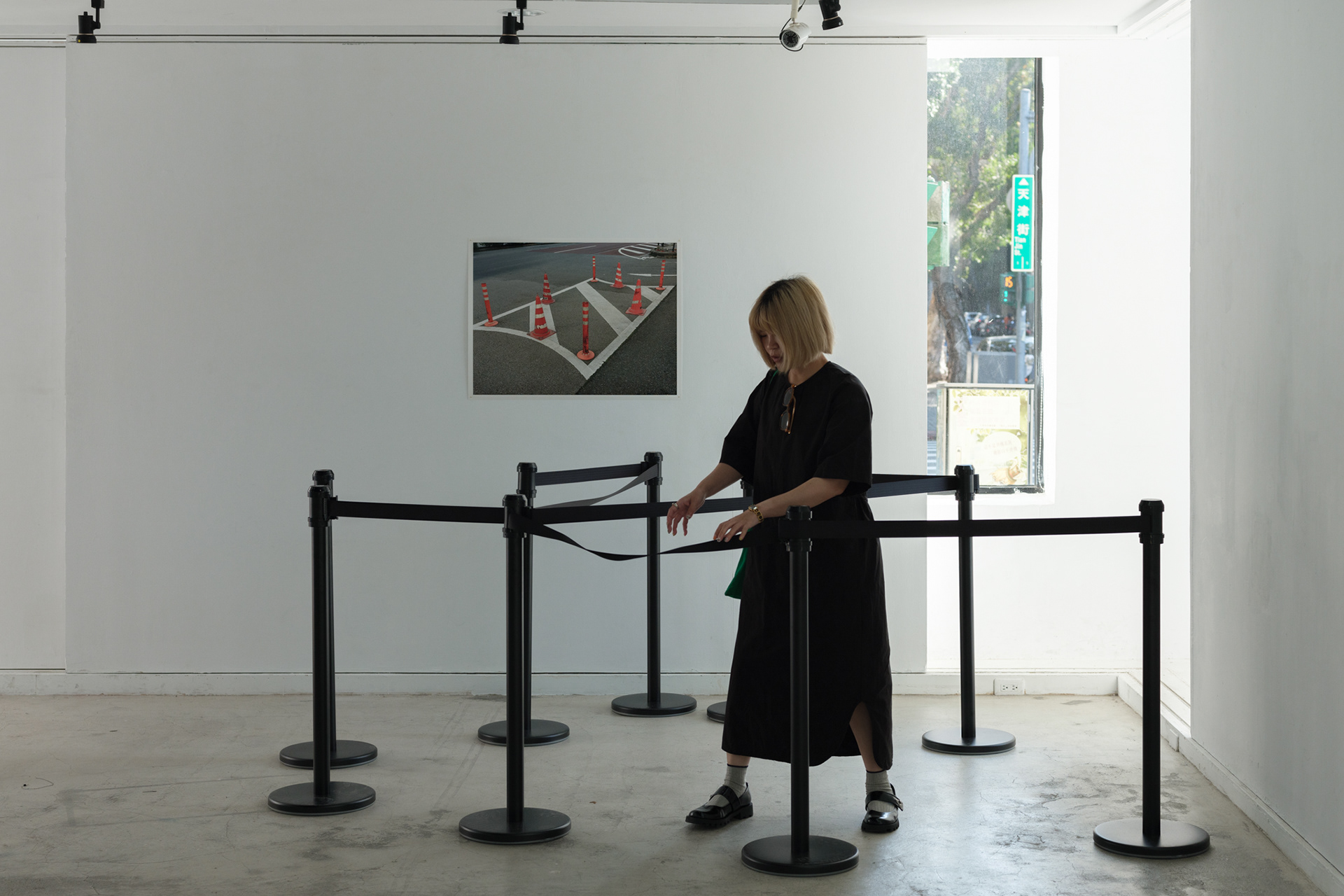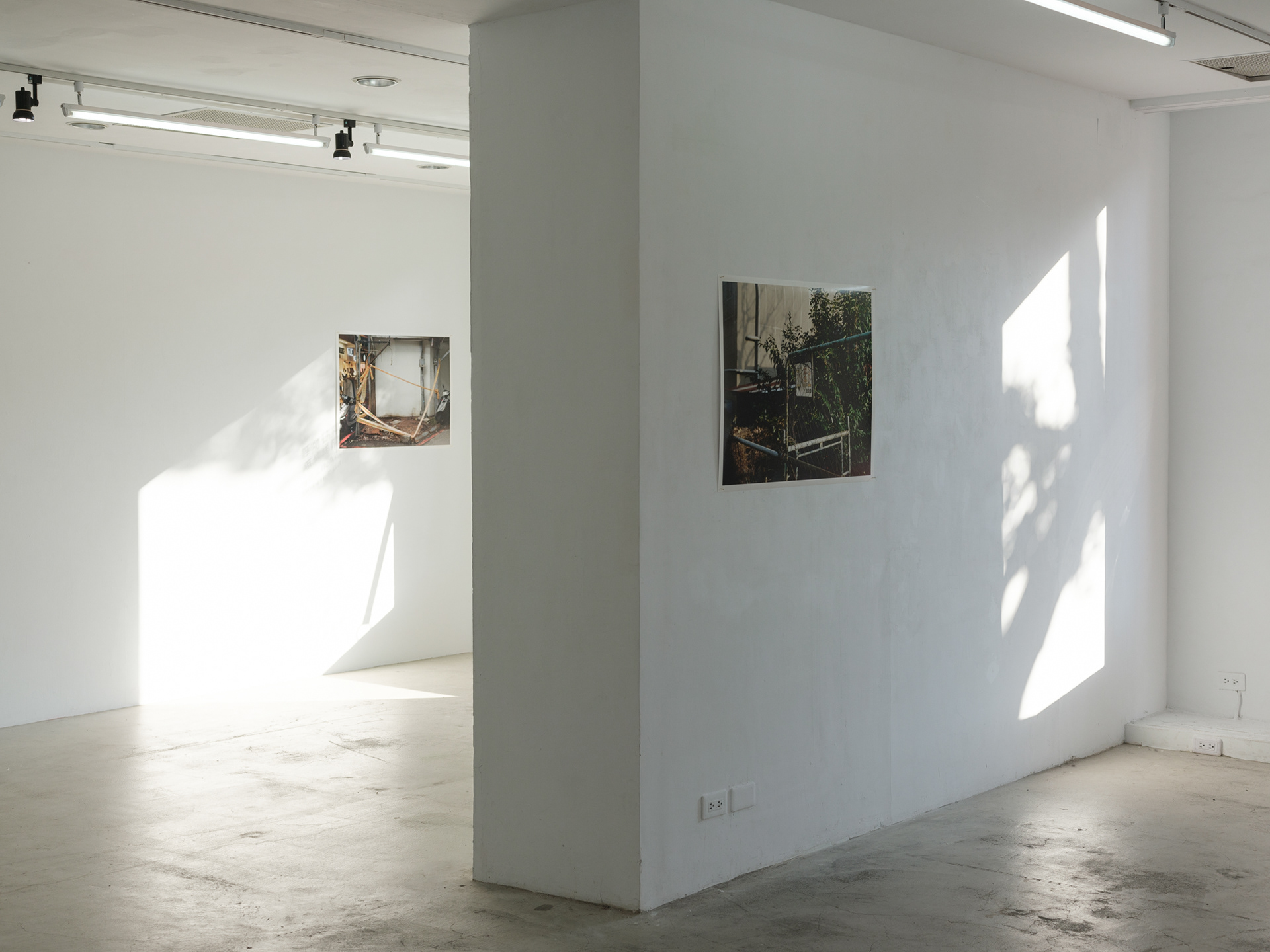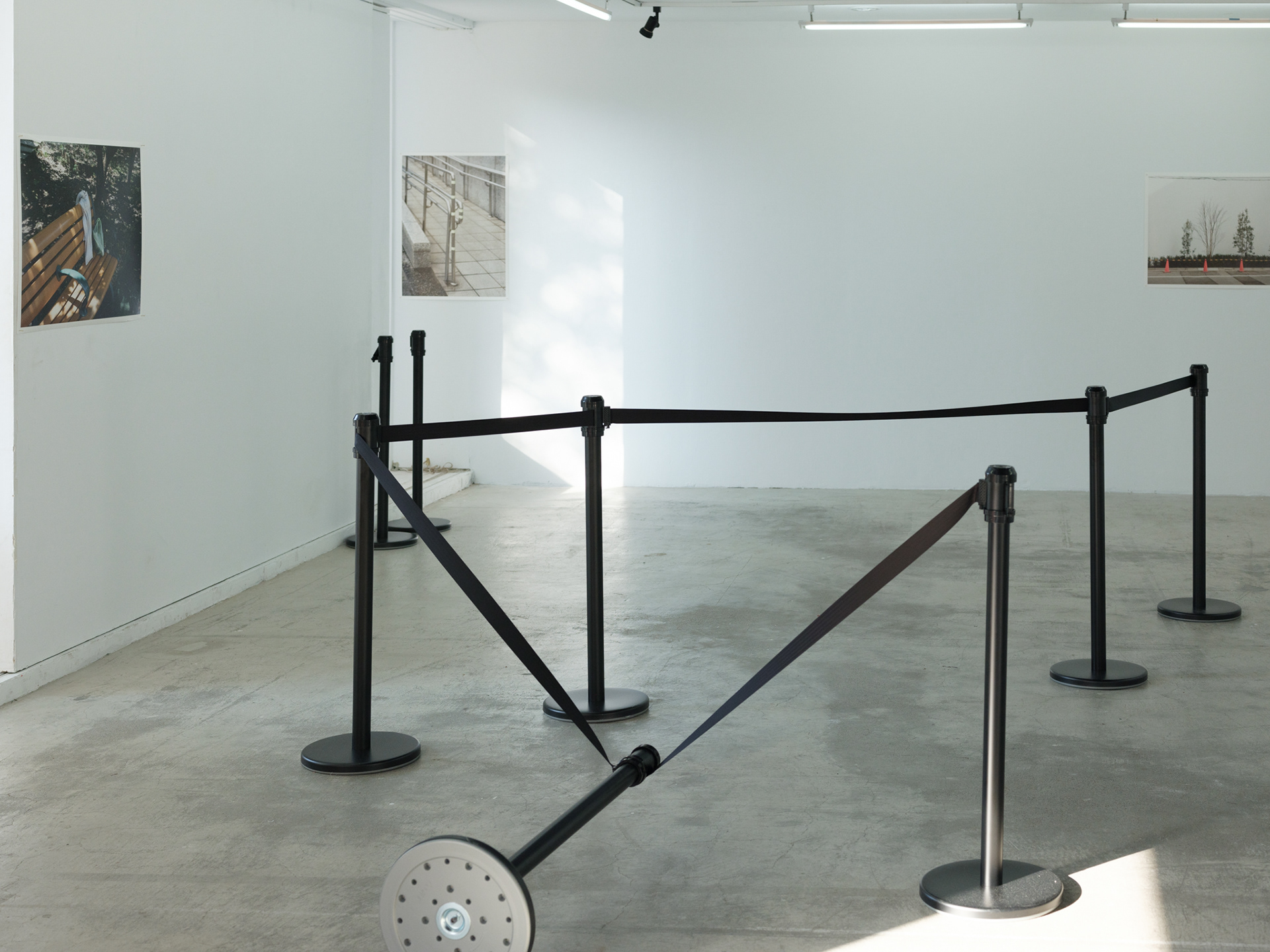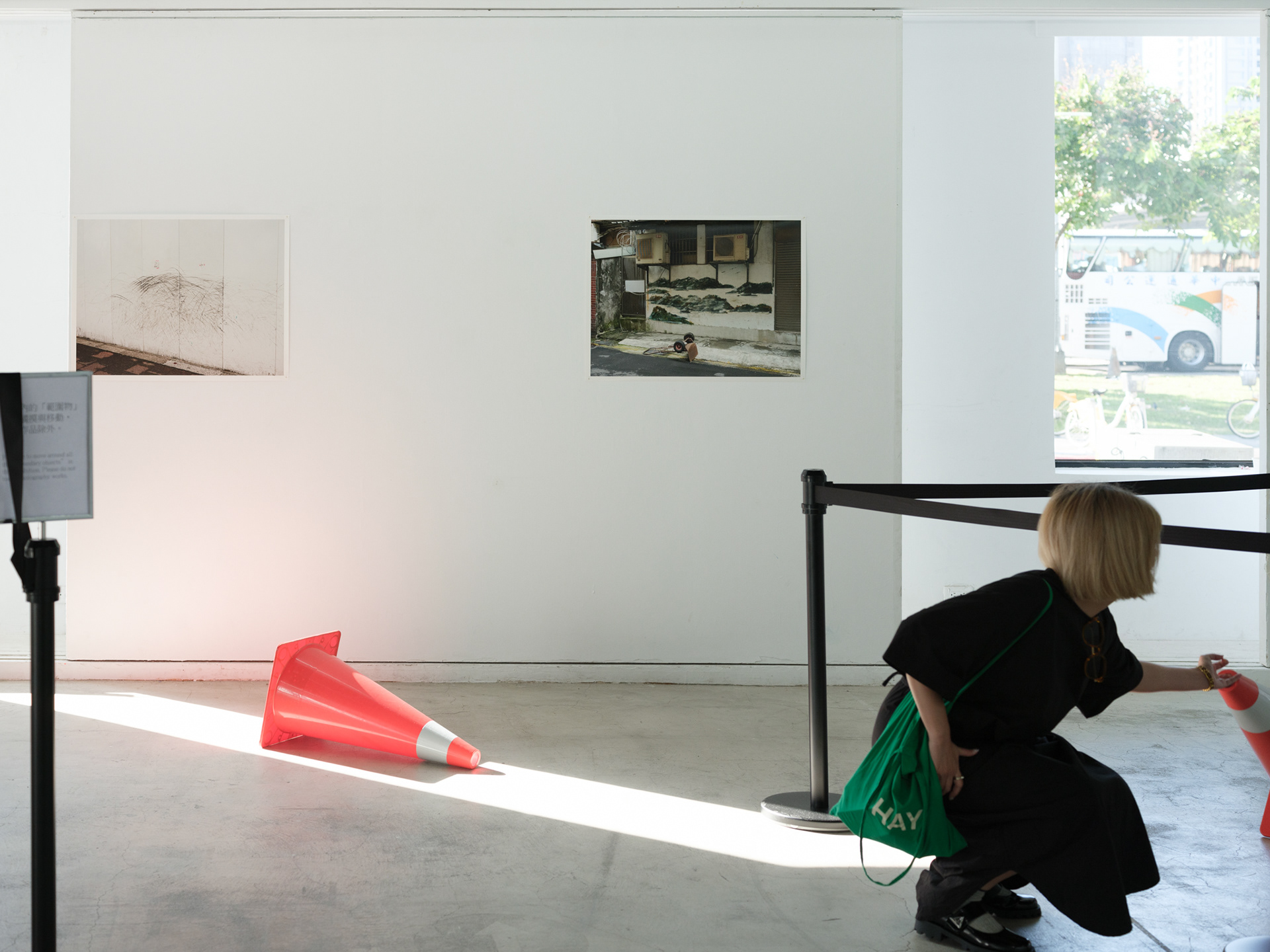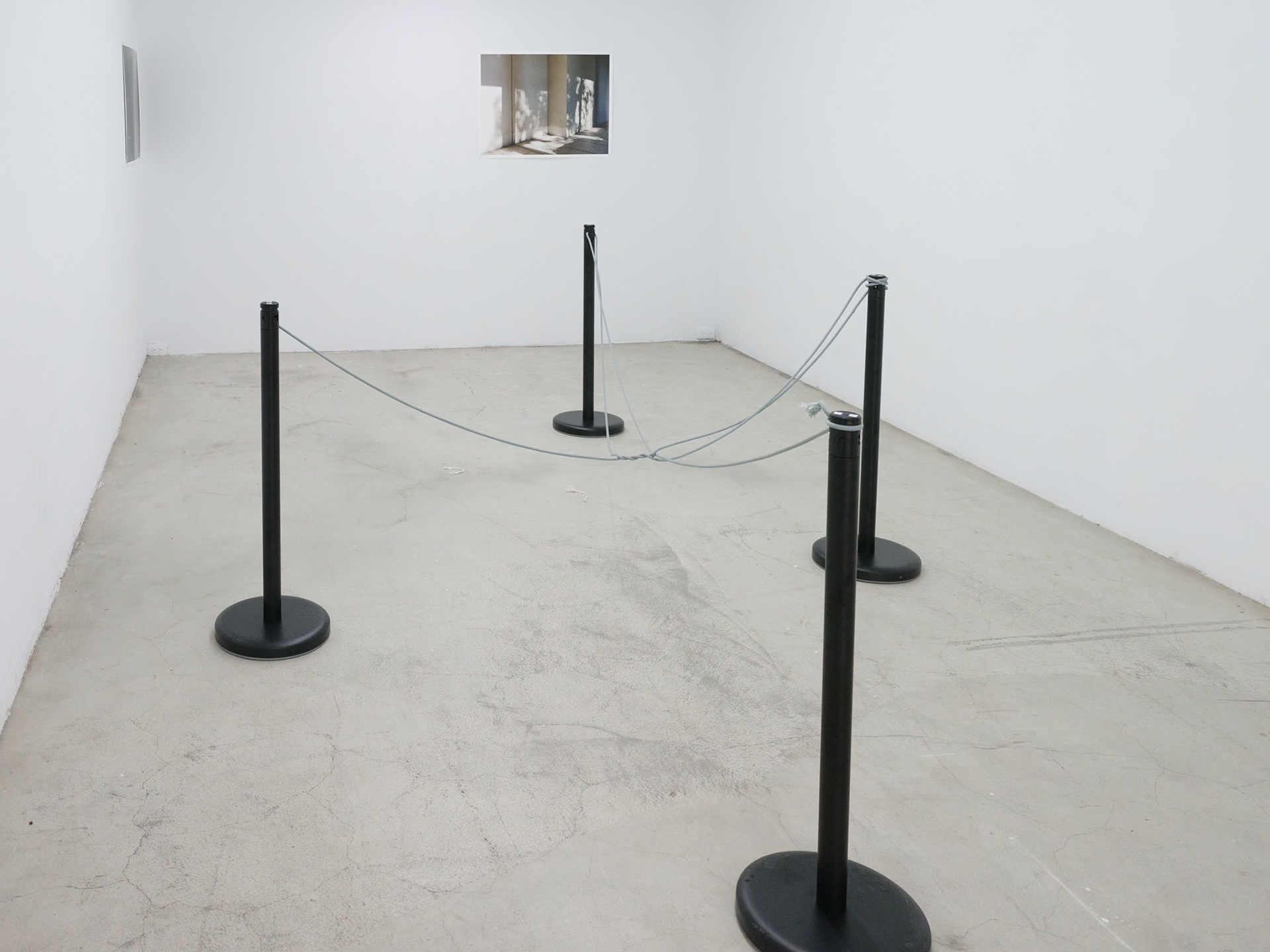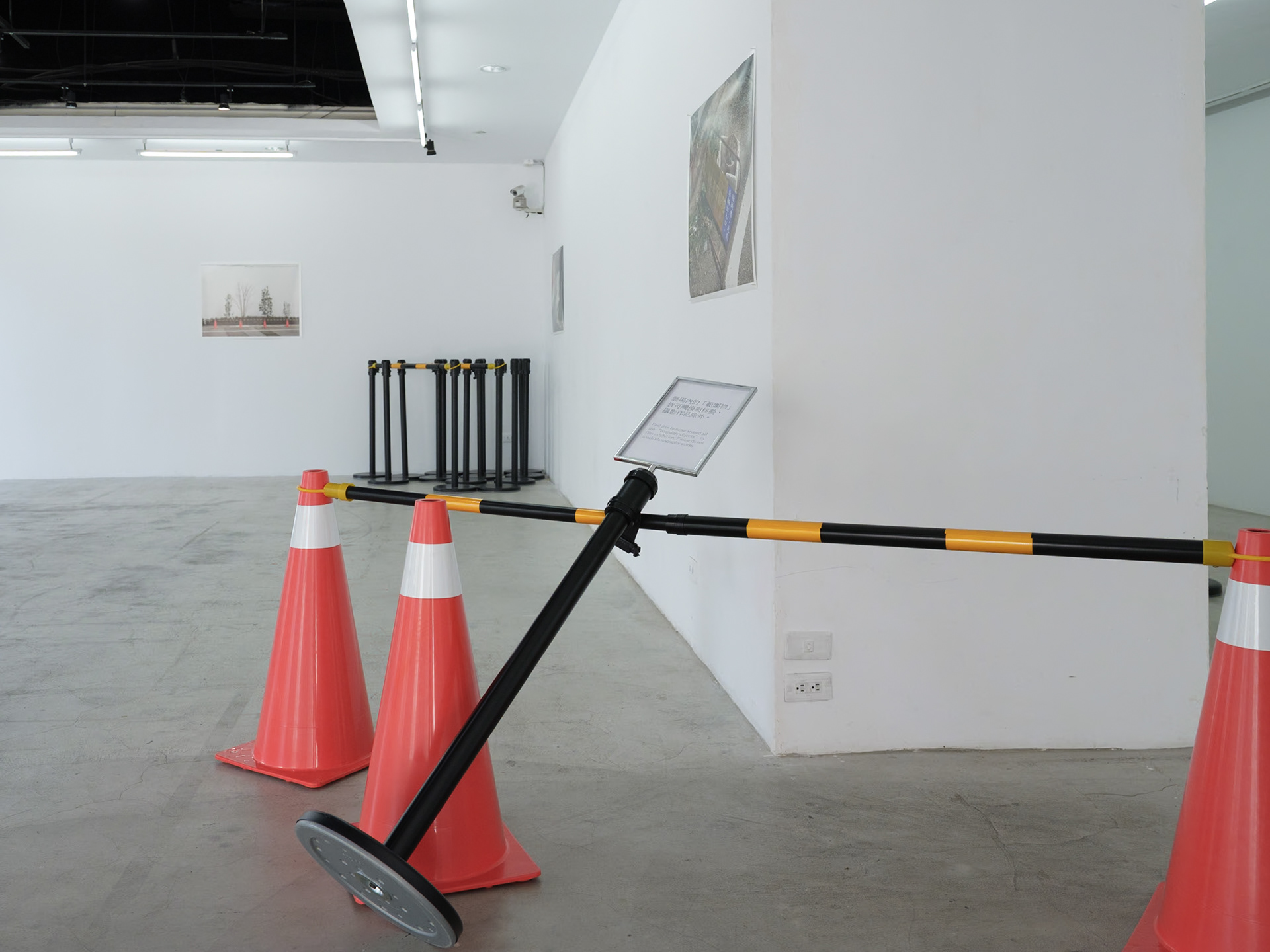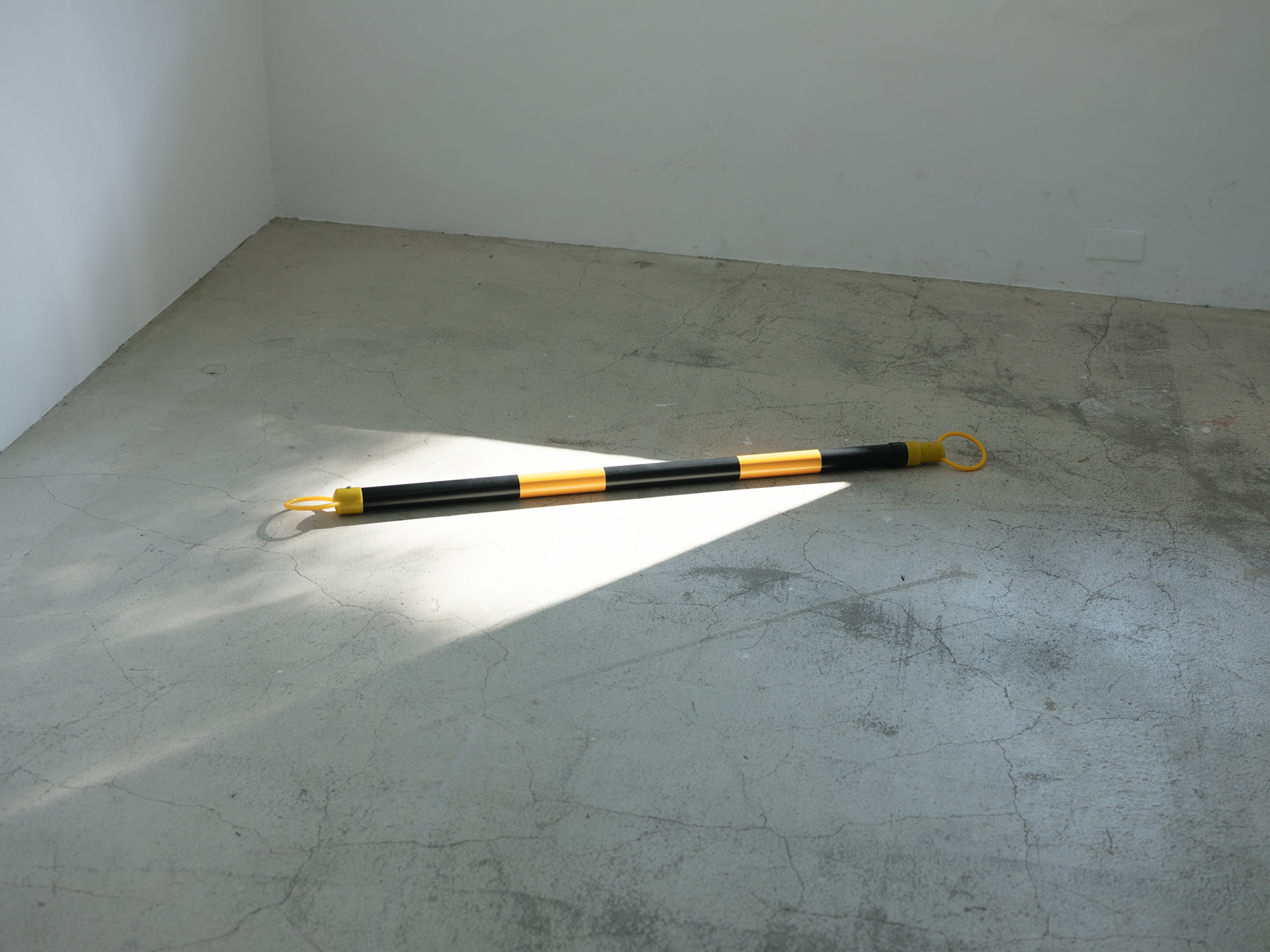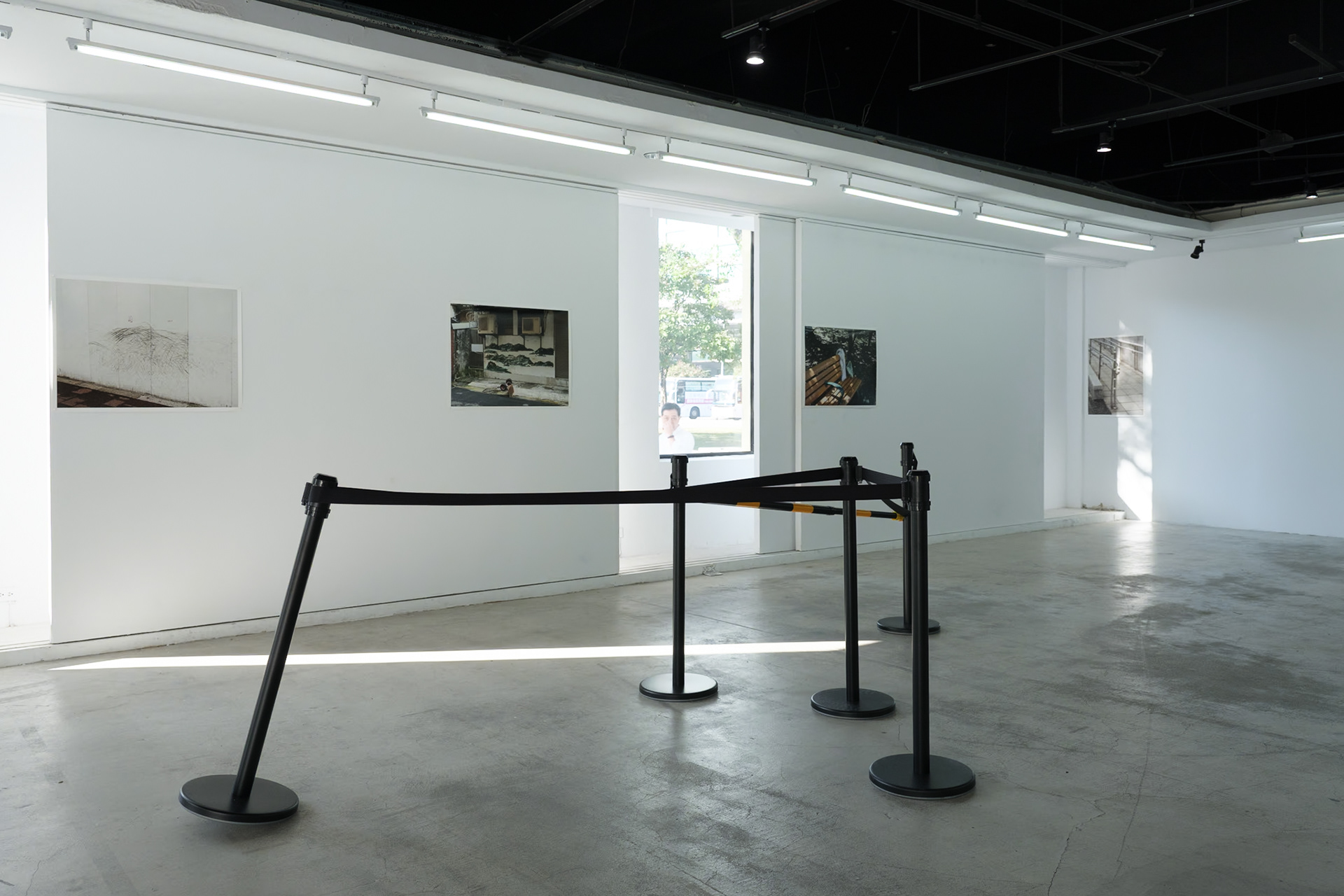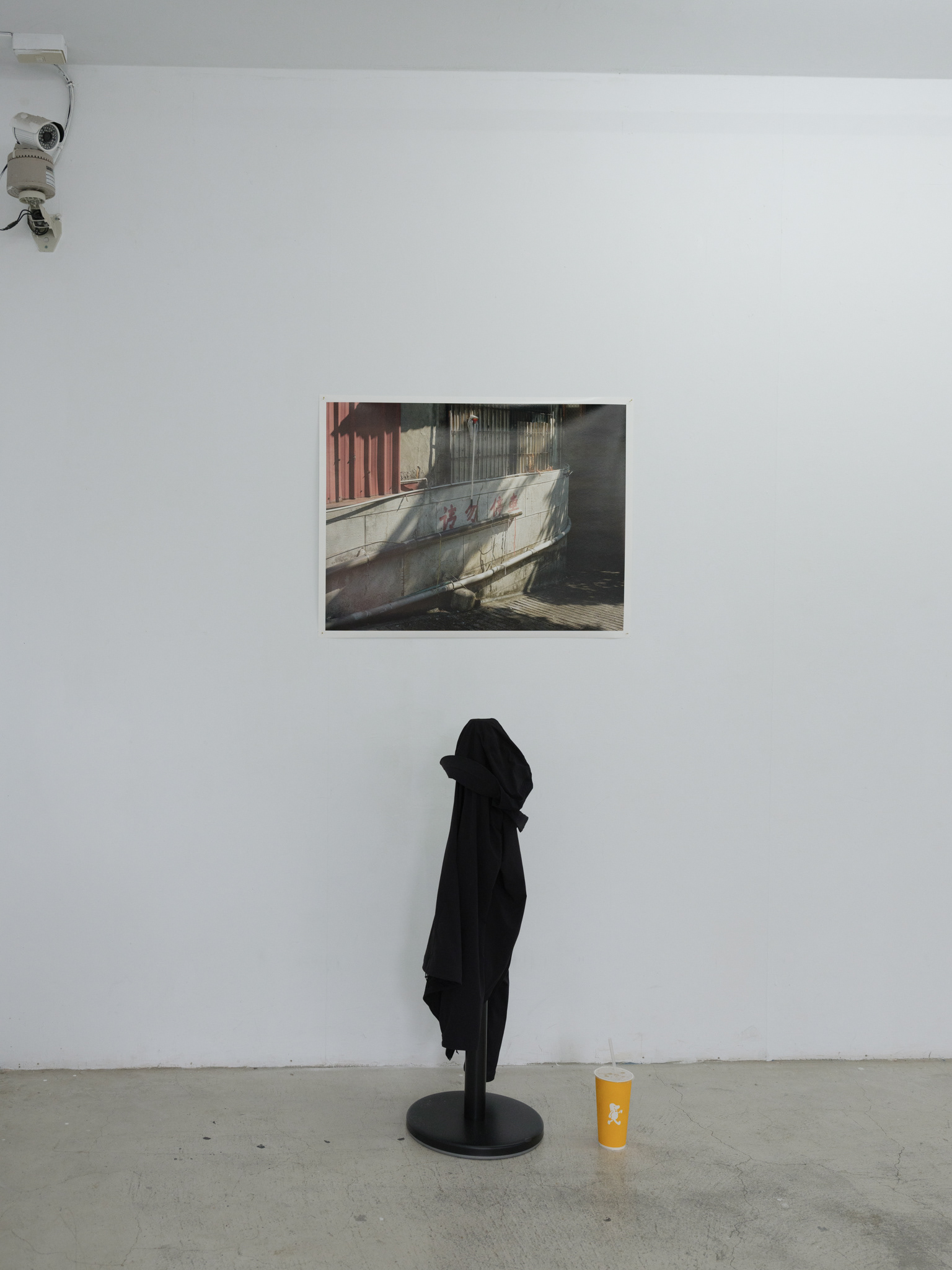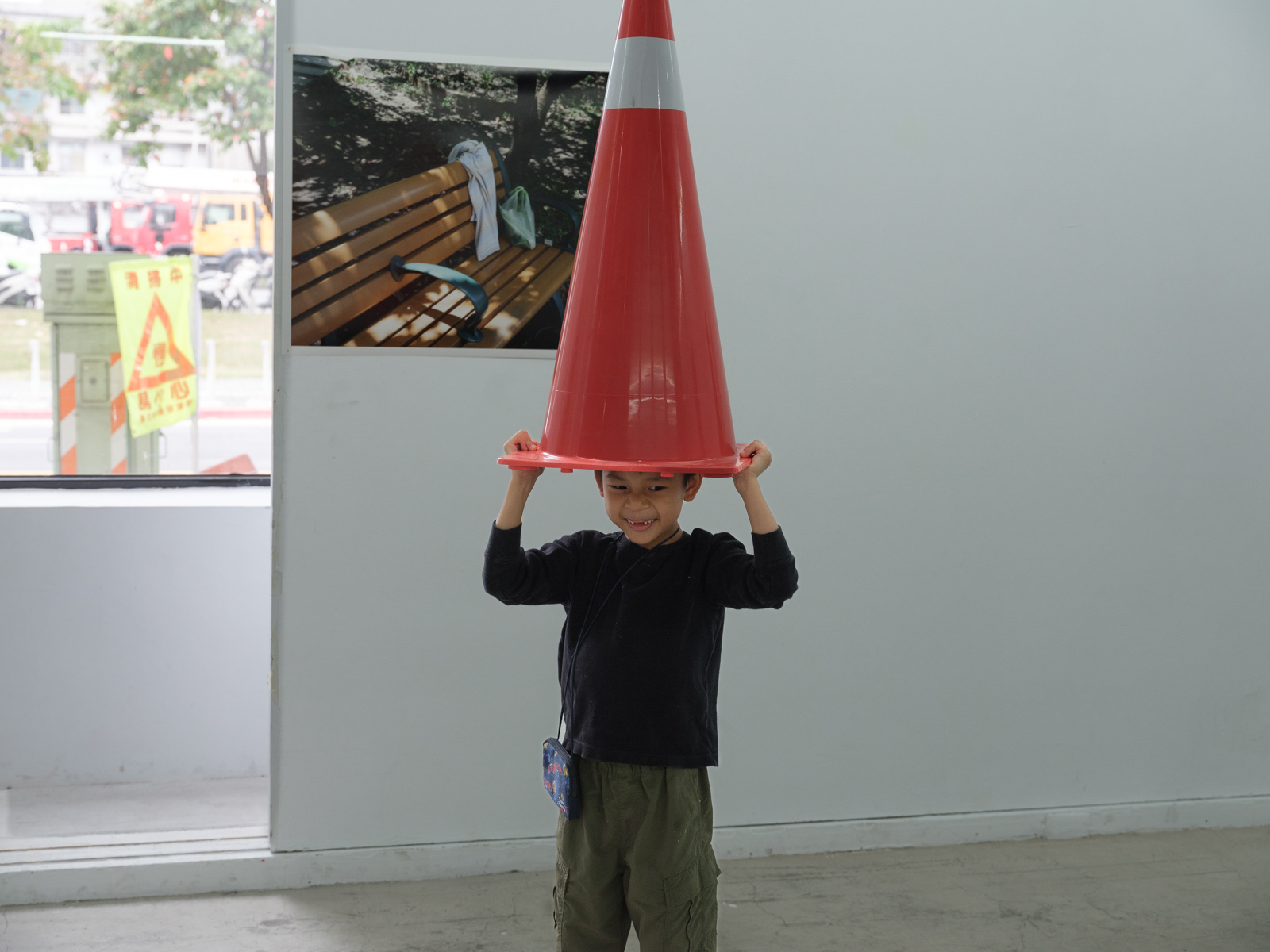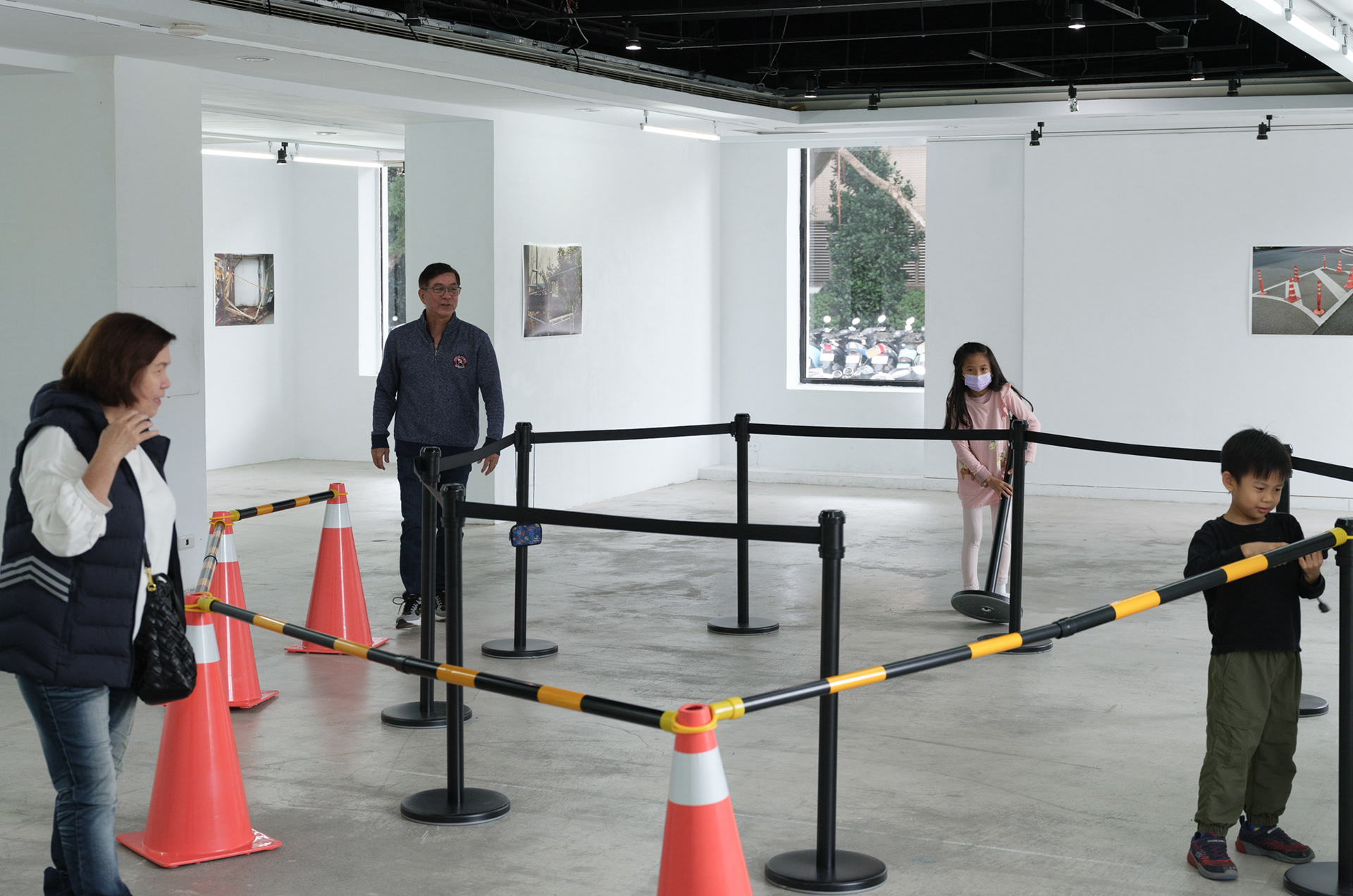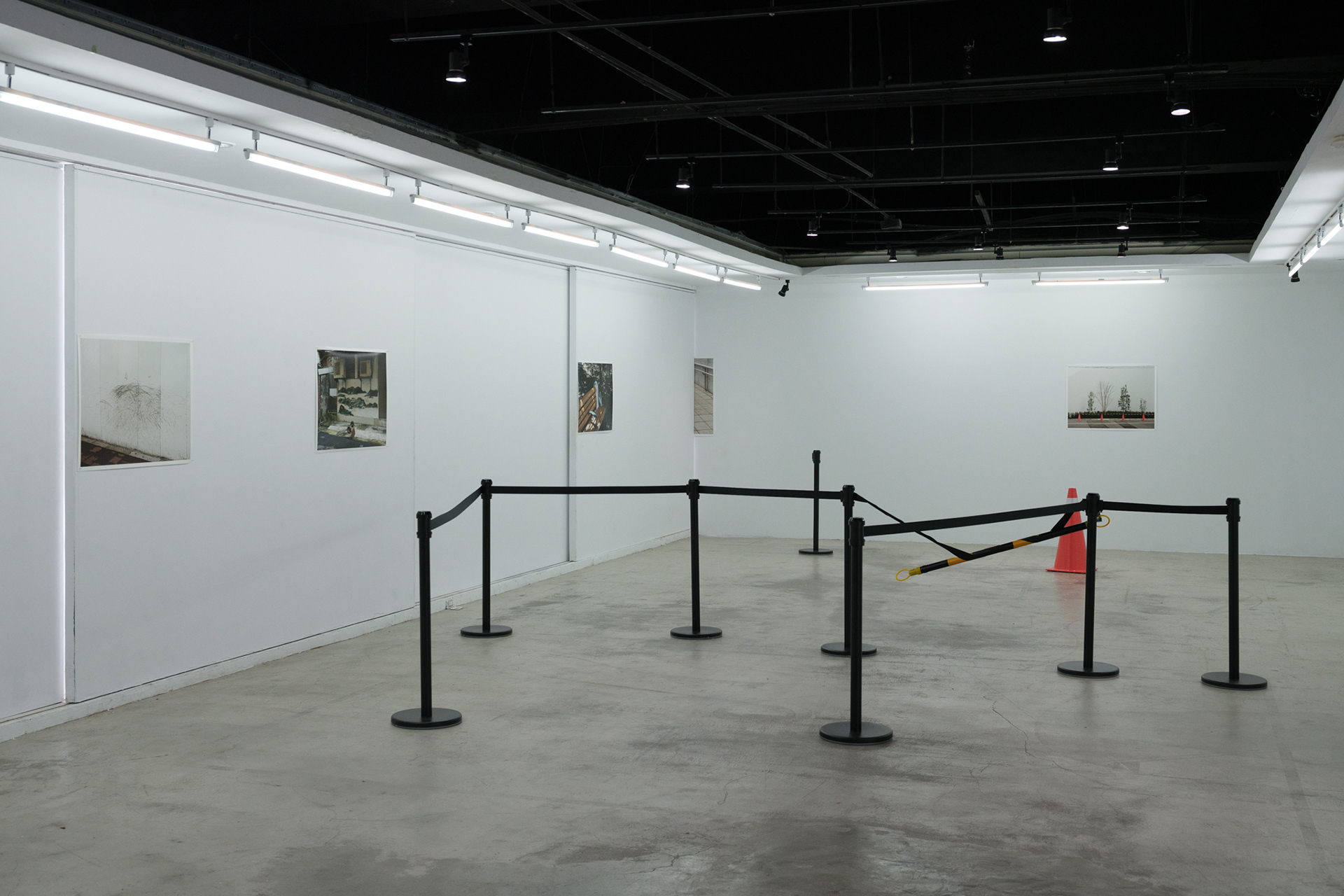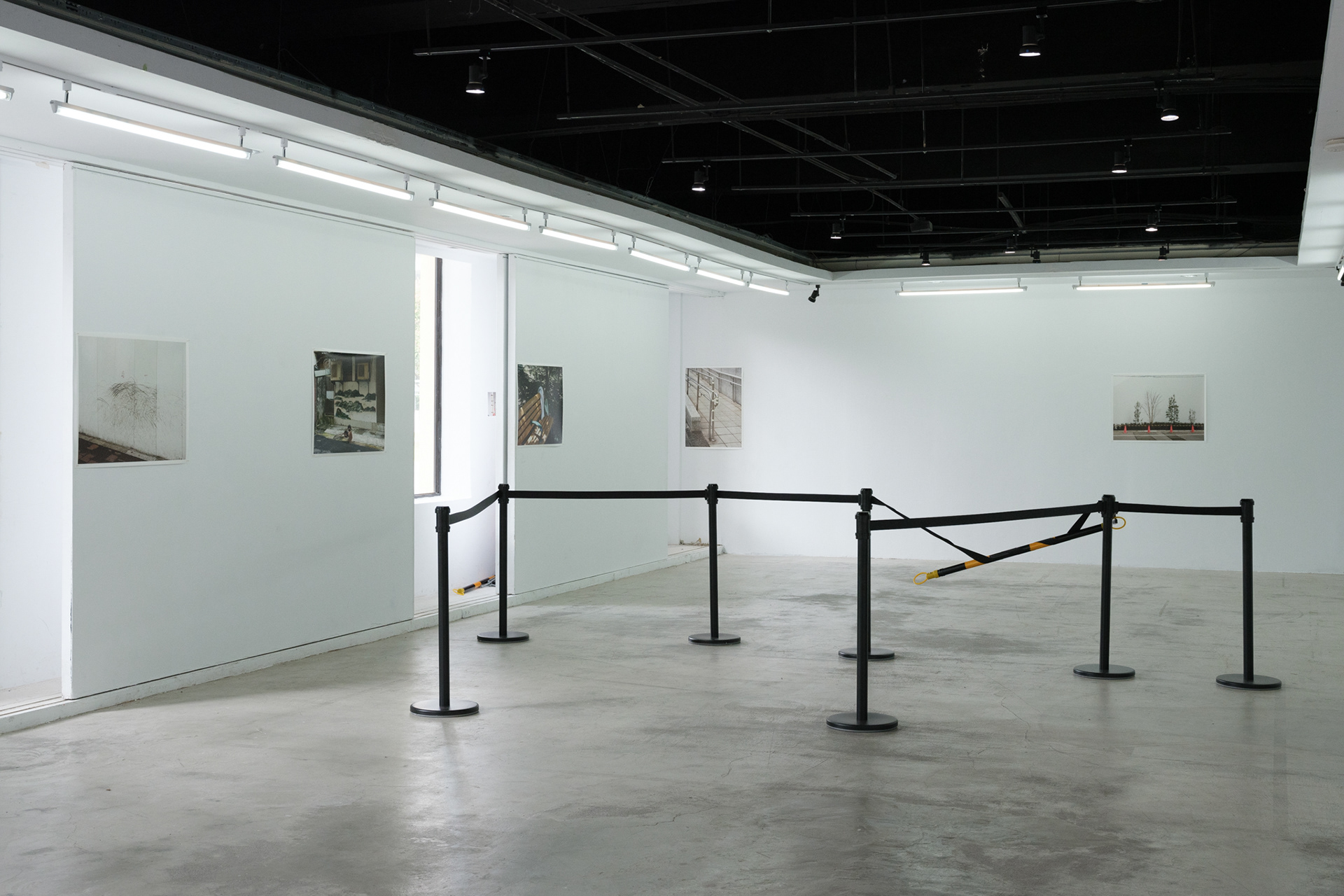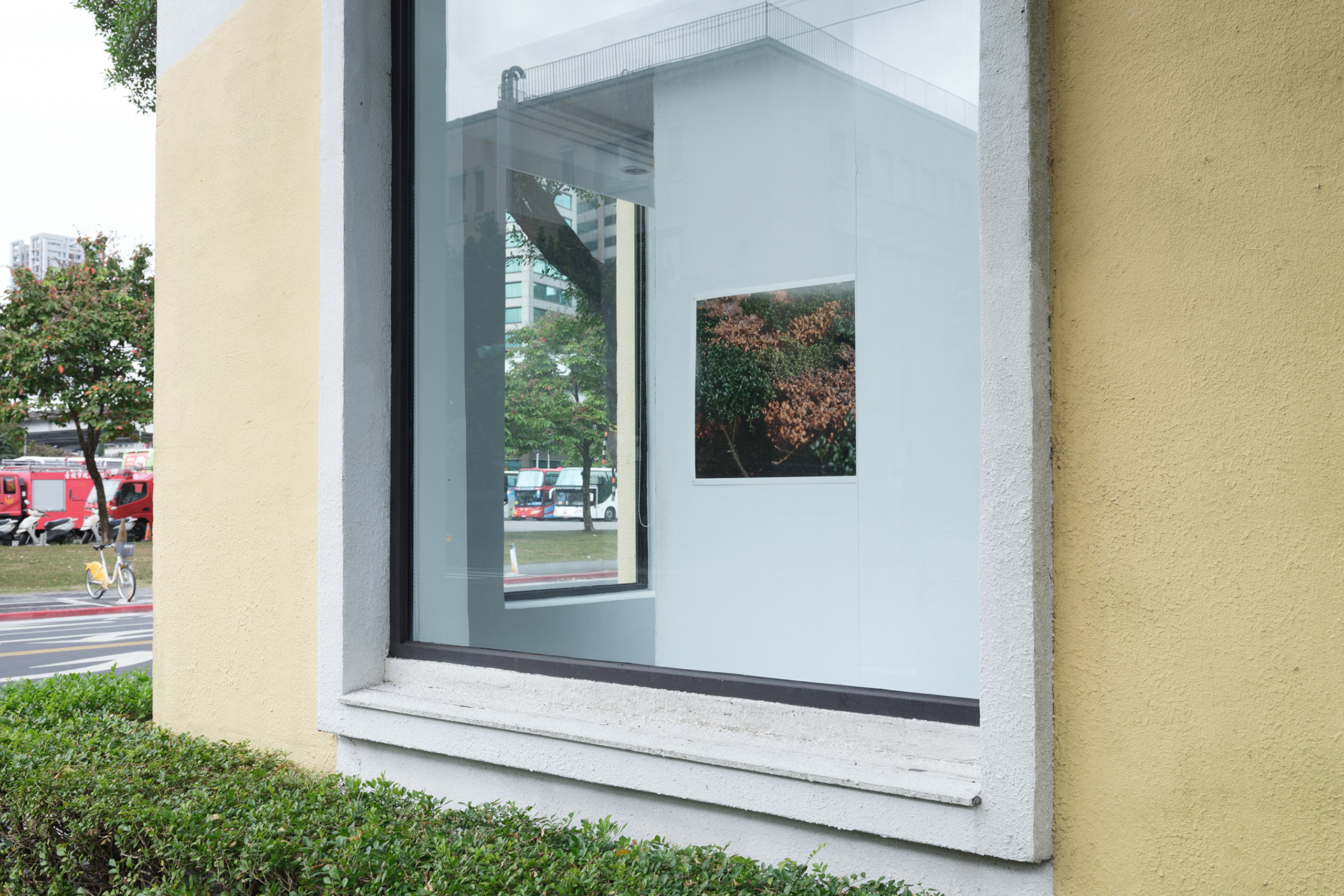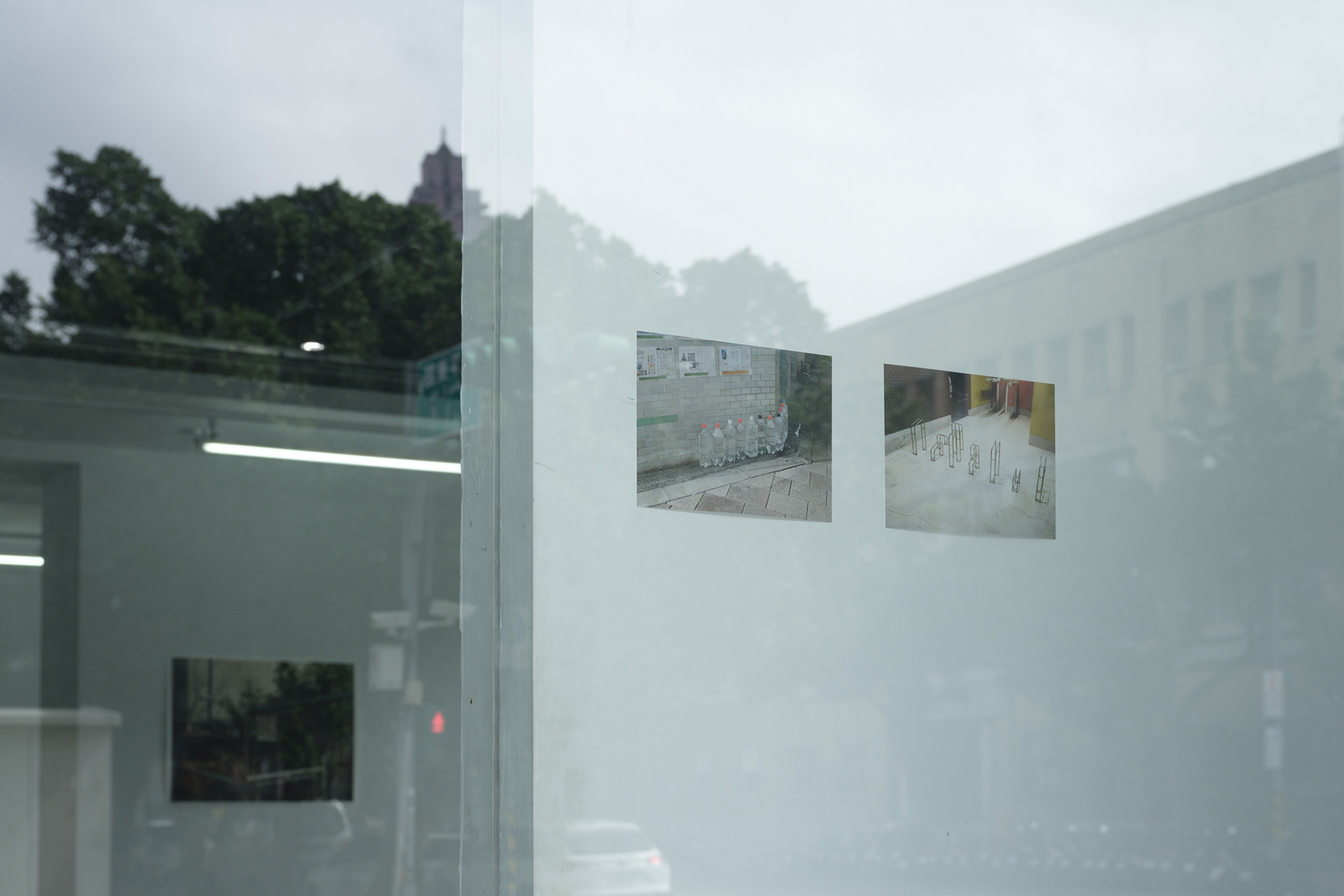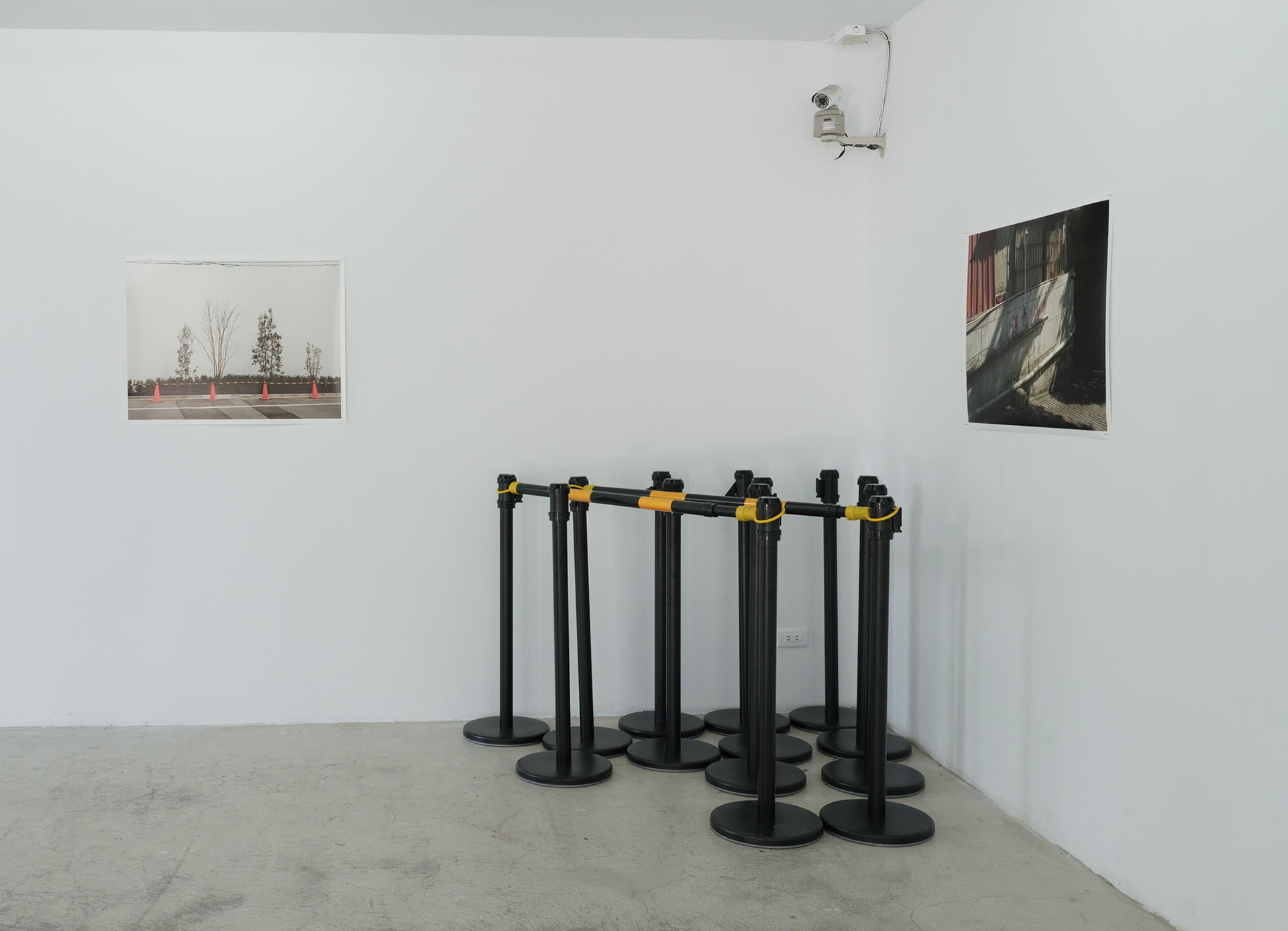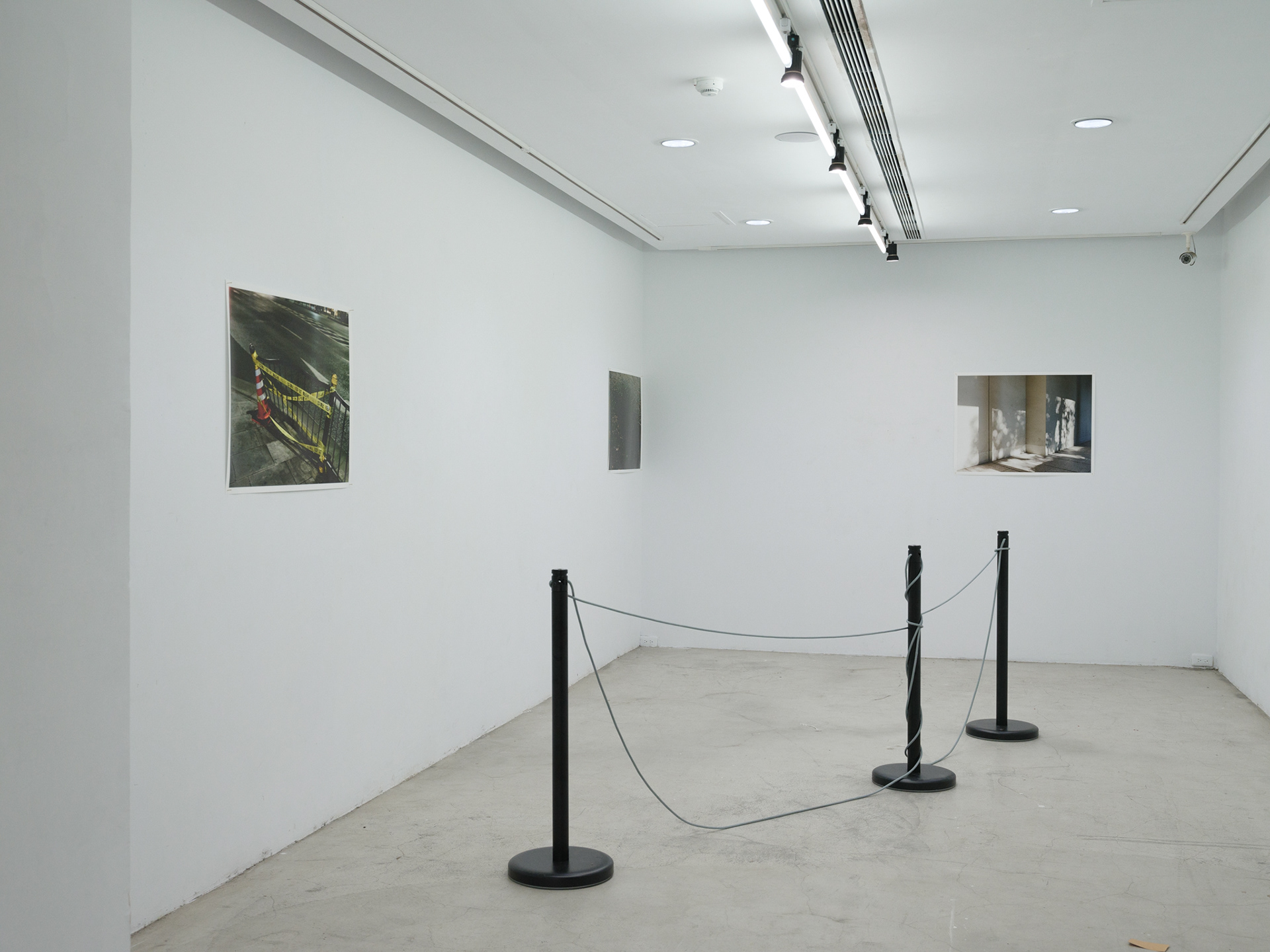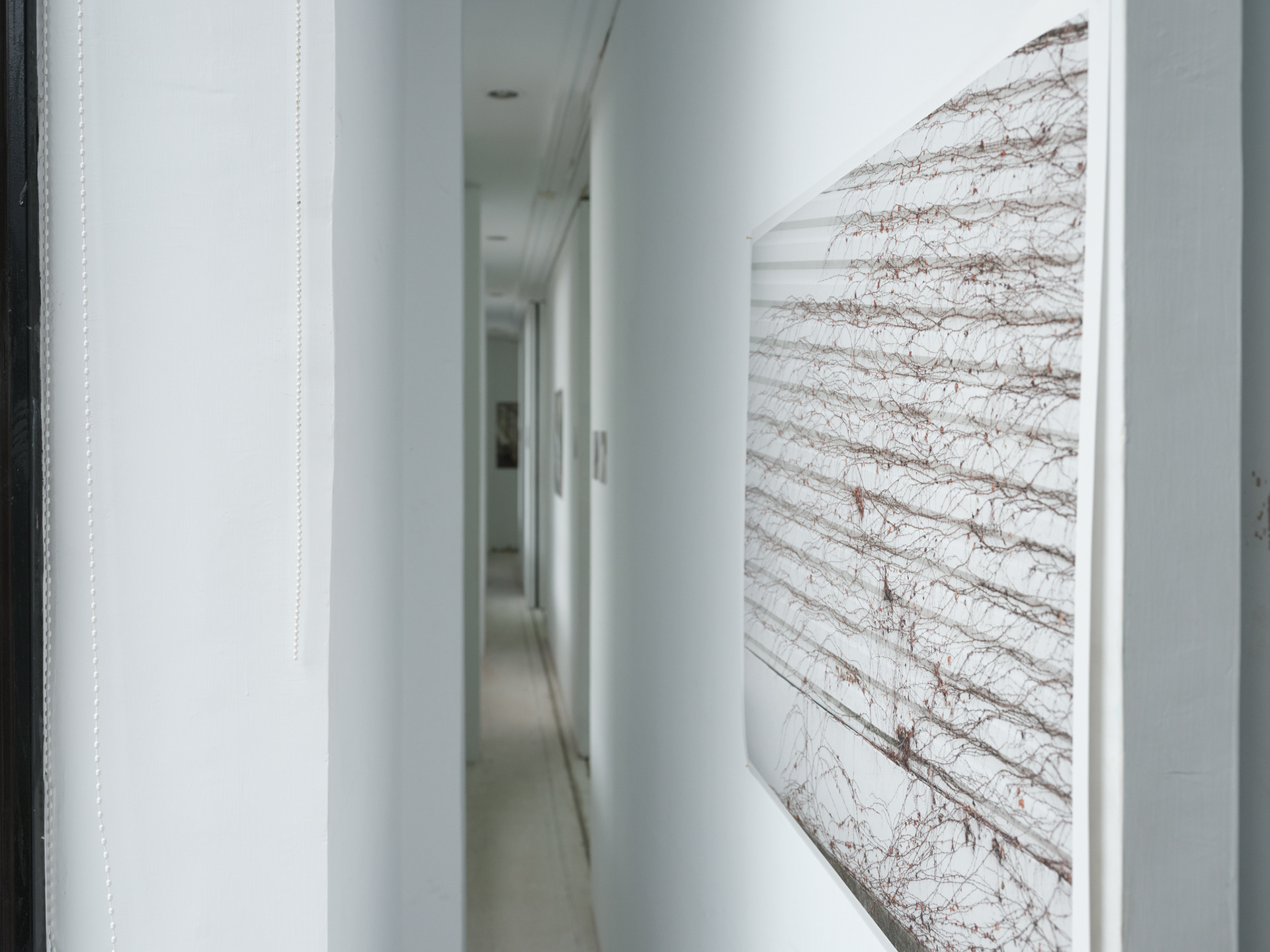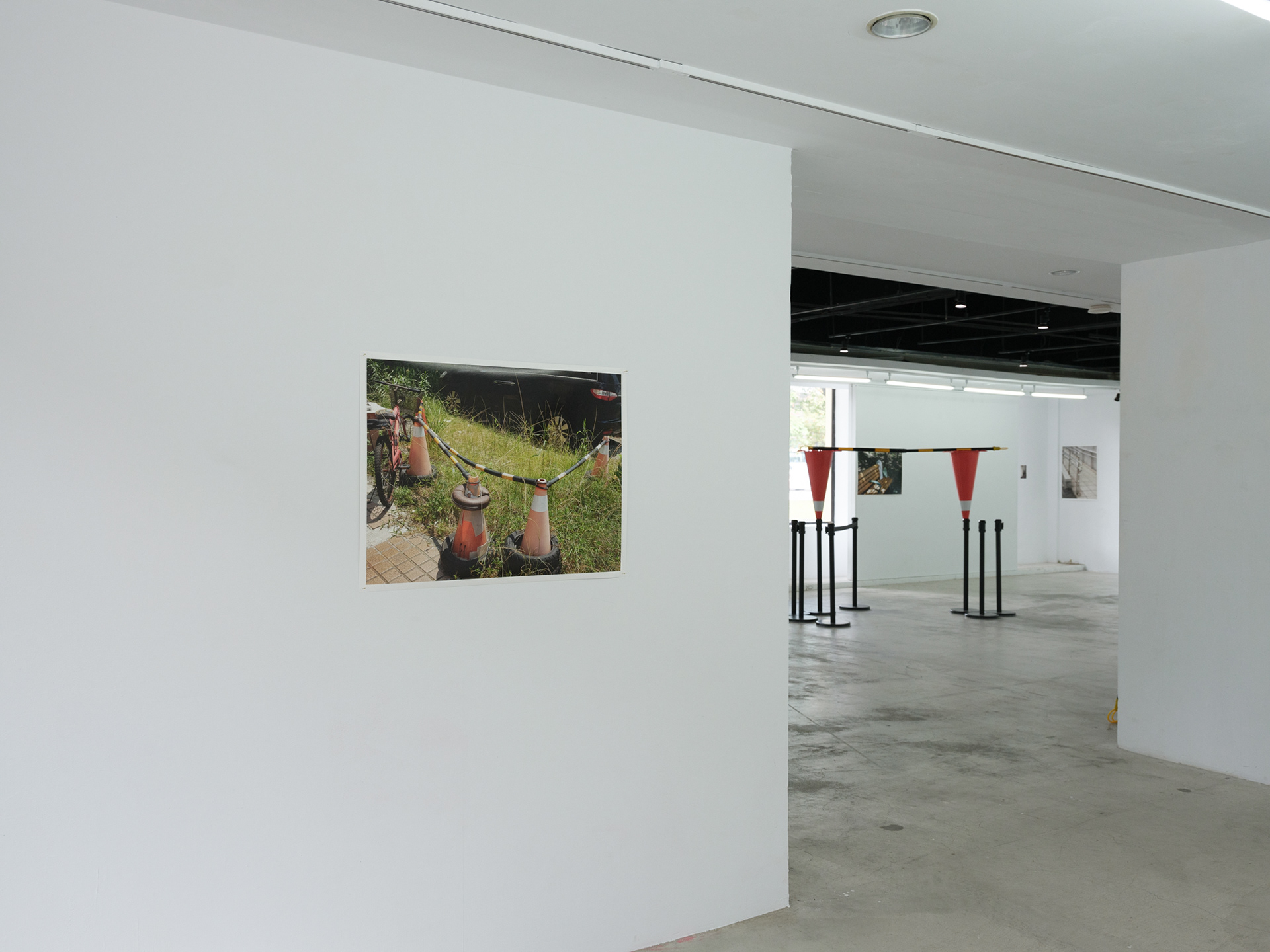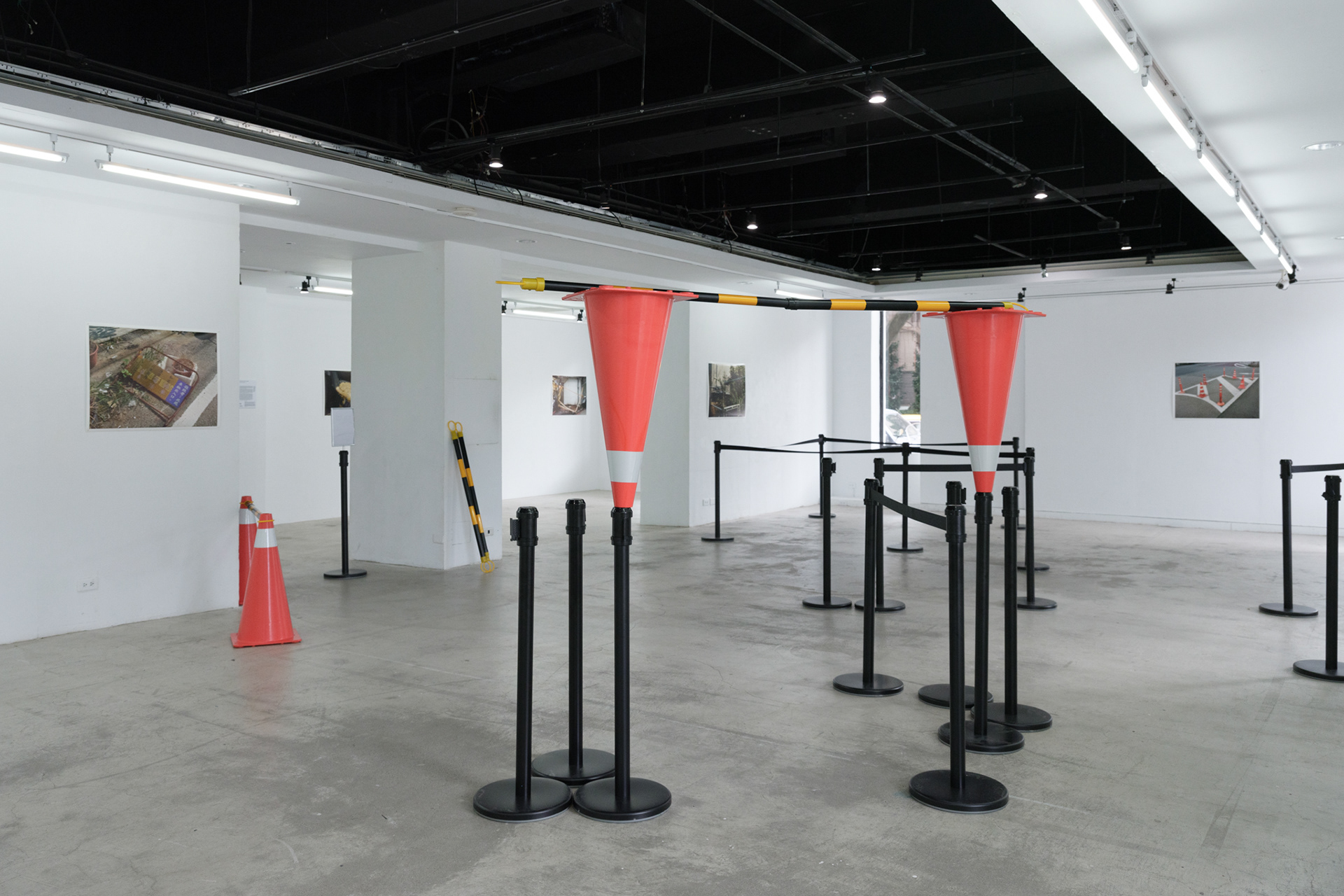靜物研究III:領域展開
Still Life Analysis III: Domain Expansion(2023)
Archival inkjet prints, retractable barriers, traffic cones with extension bars
Archival inkjet prints, retractable barriers, traffic cones with extension bars
Installation view at Taipei Artist Village 台北國際藝術村 ©ihsuenchen
Taken from the well-known Japanese action anime series Jujutsu Kaisen, the exhibition title Still Life Analysis III: Domain Expansion is deliberately “chunibyo” in its naming. Within this story about jujutsu sorcerers, the highest-level of special combat skill is called “Domain Expansion”. Sorcerers can create a specific spatial domain within a certain space, where they can enhance their abilities and expand on various given advantages; when an opponent is within this domain, all are inevitably defeated as they are unable to defend themselves against any attacks.
The authoritative rules of territories in open spaces often have a subtle yet profound influence on the behavior patterns of everyone within; while individuals still have autonomy over their bodies, they nevertheless automatically conform to the narratives and norms imposed by a given surrounding space. Amongst all, “boundary objects” can be considered the most typical spatial regulators. Coined by the artist himself, the term “boundary objects” refers to the various tools or signs used to define boundaries in open spaces, such as retractable barriers, traffic cones, yellow construction warning tape, “Do Not Enter” signs, or even potted plants used to reserve spaces ahead. These “boundary objects” withhold rigid territorial division function and therefore possess a fascinating quality of representing public authority as well–much like the “cursed objects” in Jujutsu Kaisen that possess direct and effortless control over the movement of people’s bodies and minds in the story.
Still Life Analysis III: Domain Expansion thus results from such a contemplation. Artist Chen I-Hsuen compiles three years’ worth of photography projects on “boundary objects”, including Soft Quarantine (2020) shot at Tokyo, Japan, during the pandemic, Torn Seat Pads in Taipei (2022) presented at Taipei Artist Village (TAV) last year, as well as this year’s Domains (2023) series–all which closely examines the various aspects related to “boundary objects” by using the camera as a tool to selectively frame and highlight different boundaries. In addition to showcasing Chen’s “boundary object” photography, the exhibition venue itself is also surrounded by physical “boundary objects” that attempt to “unfold” various “territories”. For example, items such as retractable barriers are used instead of the expected walls and pathways at the exhibition venue, which open up the walls to utilize the gap between the inner and outer walls to display smaller photos that require the audience’s close observation; here, “boundary objects” are used as presentation tools to display Chen’s photography. Through such a combination of photography and spatial installation, the artist intends to highlight concepts that include but are not limited to boundaries that are set between public and private domains, touching on themes such as human conformity, spatial openness, freedom and restrictions, and the politics of territories–all the while commemorating the impending closing and relocation of the TAV space as well.
______________________________________
1 Chūnibyō (中二病) is a Japanese colloquial term used to describe early teens who have grandiose delusions, who desperately want to stand out, and who have convinced themselves that they have hidden knowledge or secret powers. Loosely translates to “eighth-grader syndrome” in English.
______________________________________
1 Chūnibyō (中二病) is a Japanese colloquial term used to describe early teens who have grandiose delusions, who desperately want to stand out, and who have convinced themselves that they have hidden knowledge or secret powers. Loosely translates to “eighth-grader syndrome” in English.
「領域展開」是一個刻意中二的展名,取自知名熱血少年動漫《咒術迴戰》,在描寫關於咒術師的故事中,其最高特殊戰鬥技能名為「領域展開」——術師展開特定空間領域範圍,在範圍中擴大自身的特色及各種優勢規則,只要對手身處該領域中,面對所有攻擊皆無法防禦,對手必敗。
開放空間中的領域權力規則,淺移默化並深刻的影響著所有人的行為模式;每個人擁有身體的自主權,卻自動遵循空間所給予的敘事與規範,其中「範圍物」可說是最典型的空間規範器。所謂「範圍物」其實是藝術家自己下的定義,意指在開放空間中的各種劃定範圍用的器具或看板告示,如紅龍、交通錐、黃色施工警示帶、禁止進入告示牌、佔位子的盆栽等。這些「範圍物」具有強烈的領域劃分效用,並神奇的具有公權力的代言人特質;就像《咒術迴戰》當中的咒物般擁有言靈法力——直白、輕巧、且毫不費力決定所有人的身心移動路徑。
「靜物研究III:領域展開」便是在這樣的思考下進行。陳以軒整理這三年來的範圍物攝影,如疫情期間在日本東京拍攝的〈軟隔離〉、去年在藝術村發表過的〈台北破墊圖鑑〉,以及今年拍攝的〈領域〉系列,都密切關注「範圍物」的相關種種——使用相機去局部框選,以並凸顯各式範圍。除了展出範圍物攝影,展場中並搭配實體範圍物件去試圖「展開」各種「領域」:例如使用紅龍等物取代展牆與動線;將展牆打開,利用內外牆中間的空隙,展出需近距離擠身觀看的小照片;還有以範圍物件作為攝影的展呈機器等等。藉由攝影與空間裝置的組合,想試著討論的包含但不限於以下概念:公私領域之間、人的循規蹈矩、空間的開放性、自由與限制、領域的政治,同時以此紀念TAV這個空間的關閉與遷移。
Photographs:

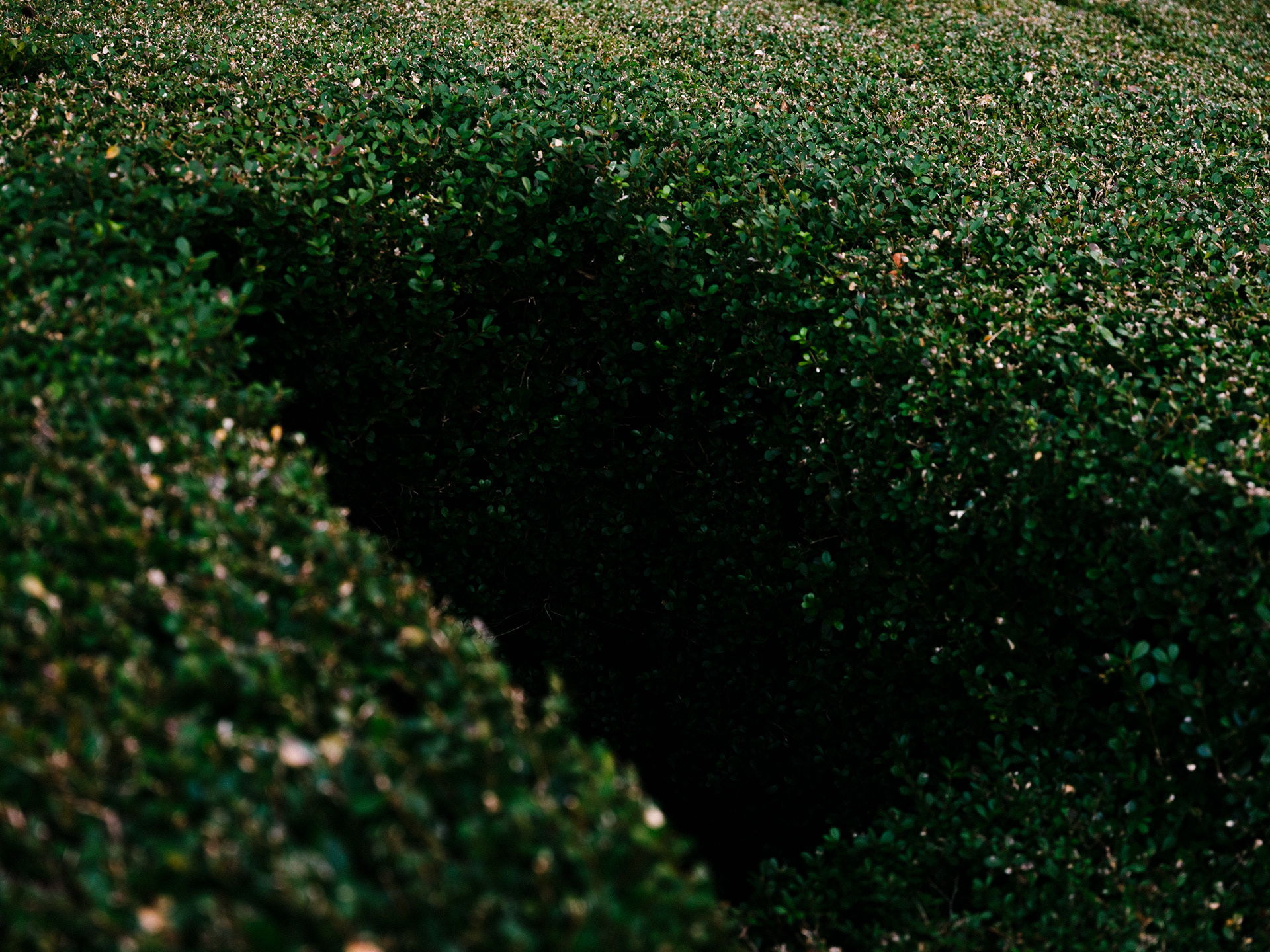
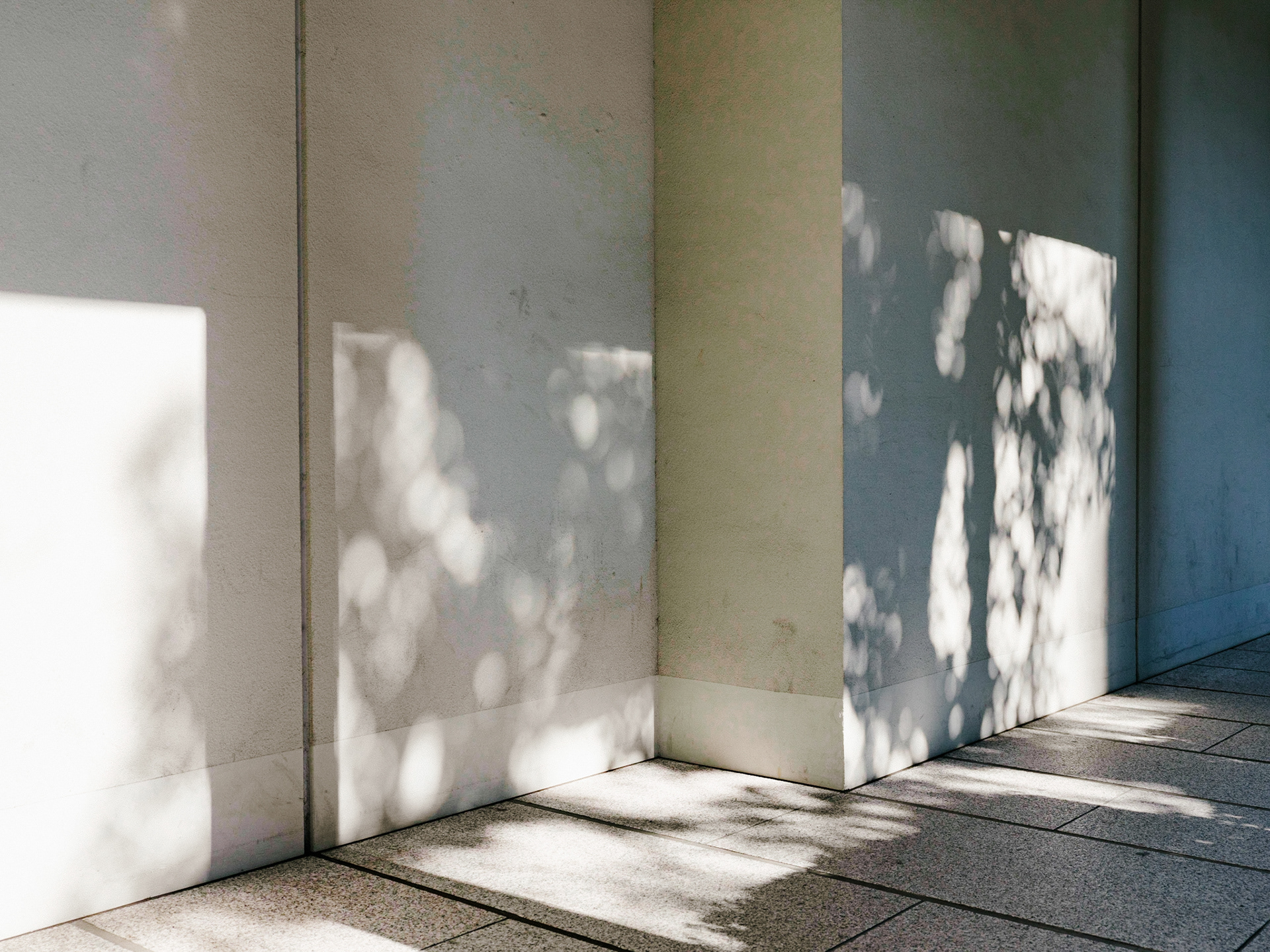

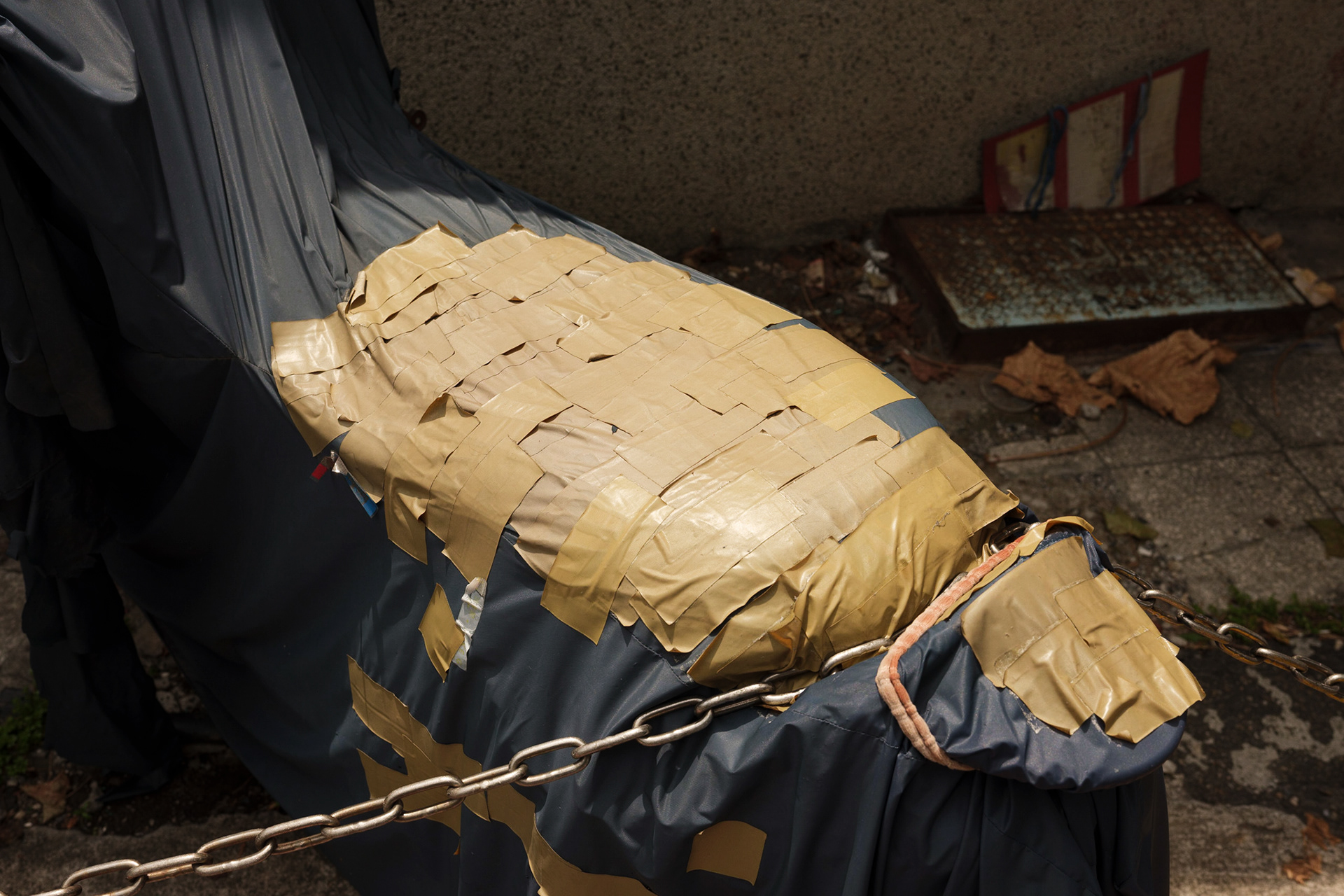

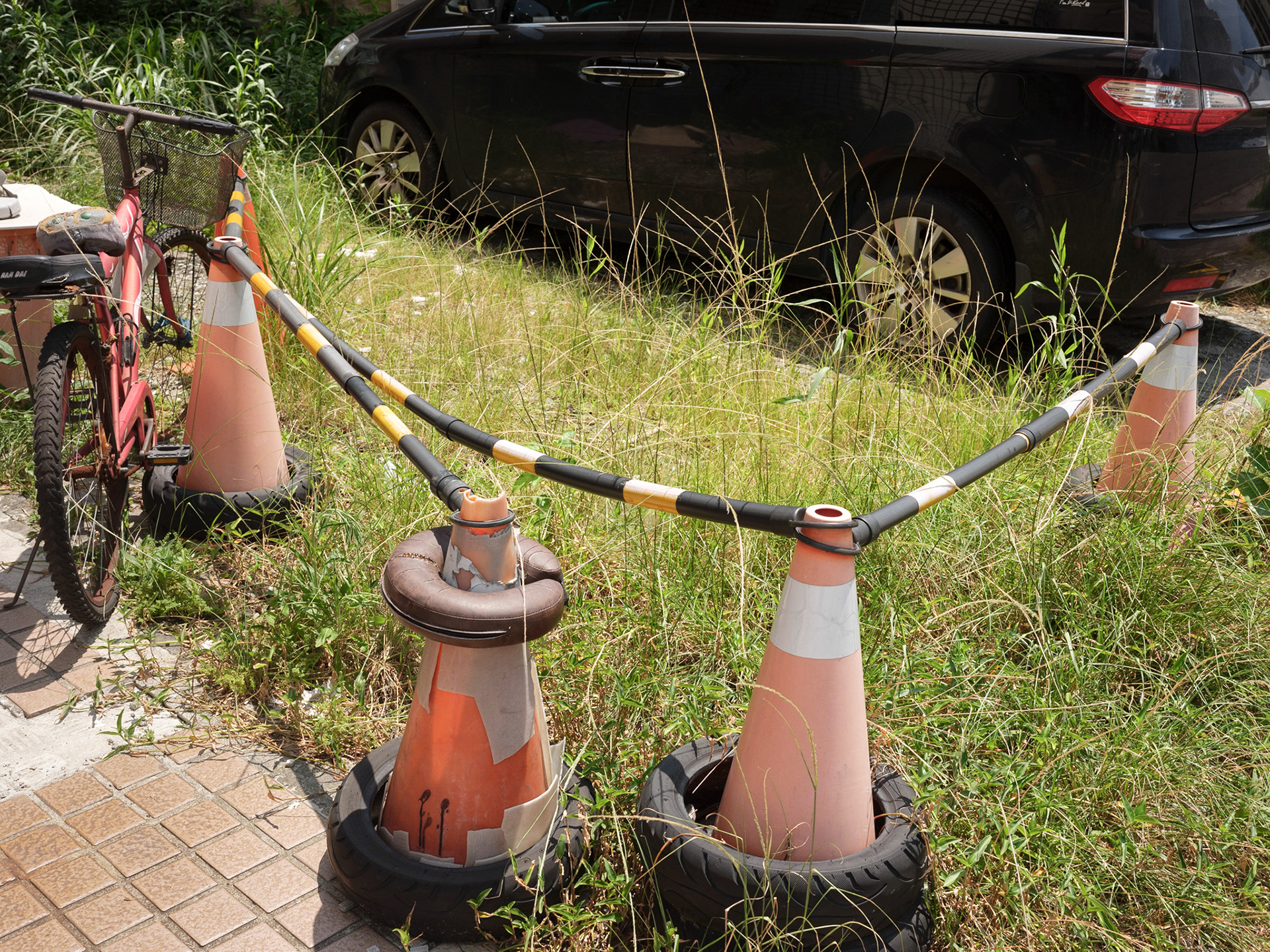
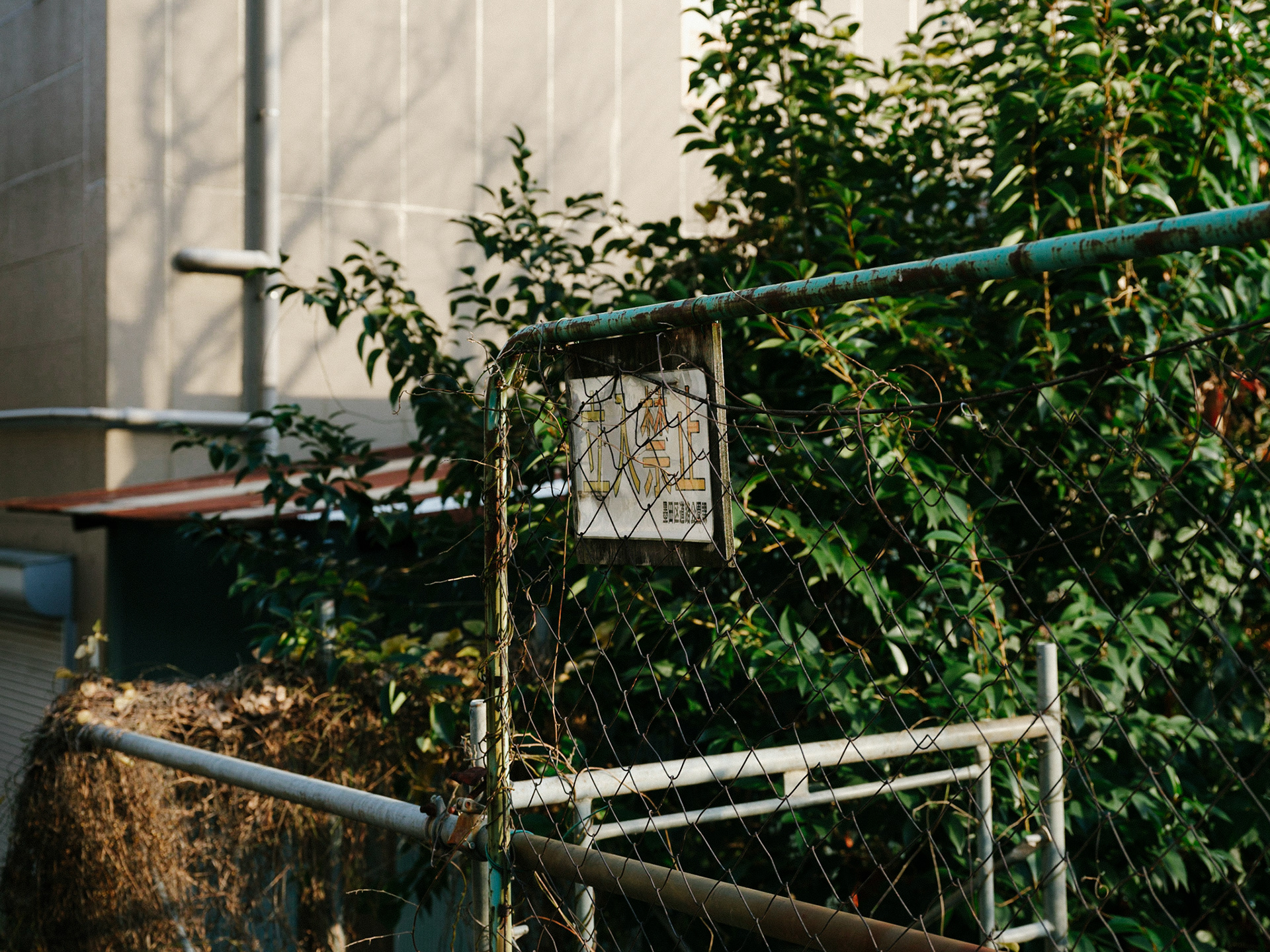
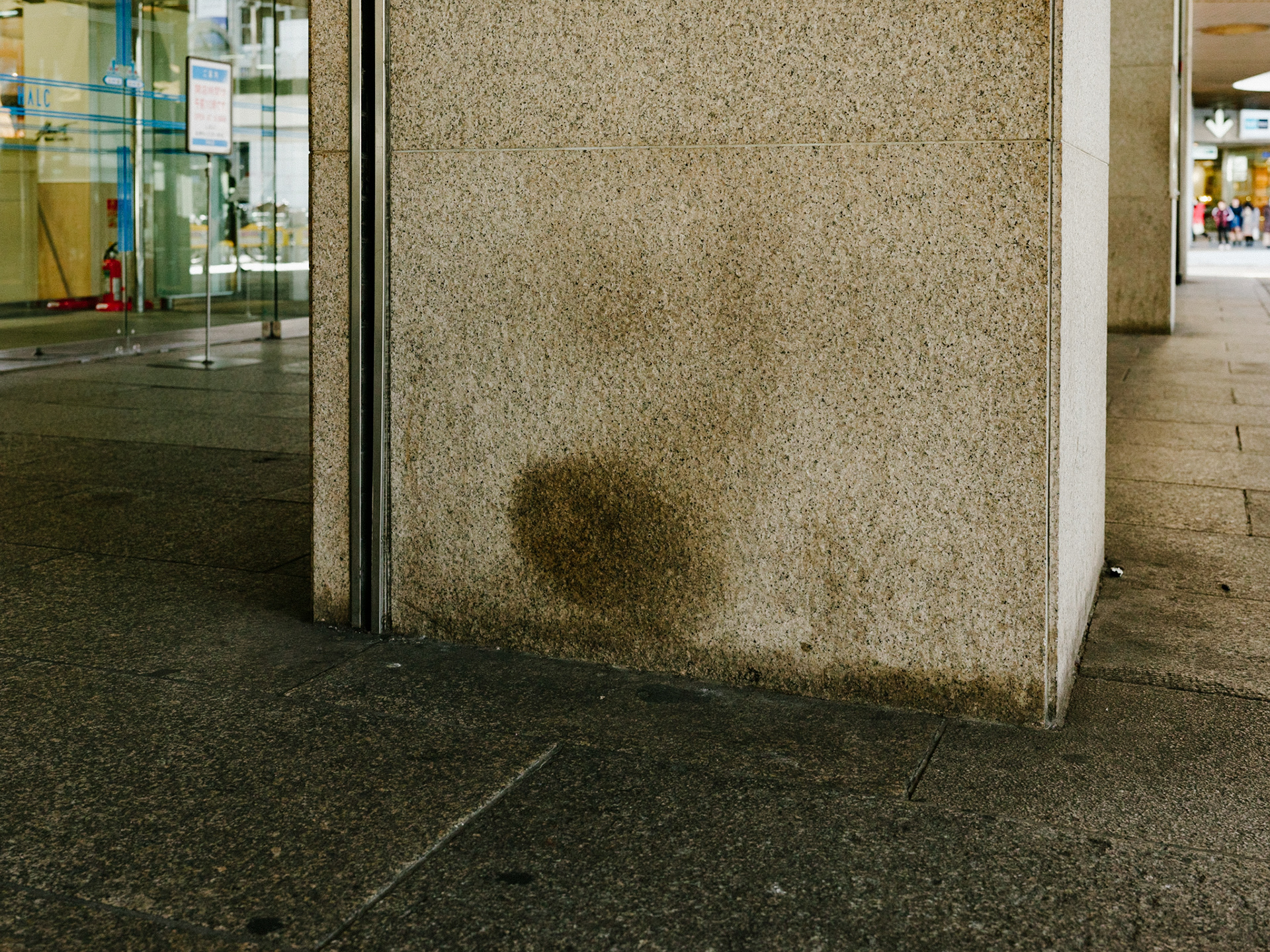
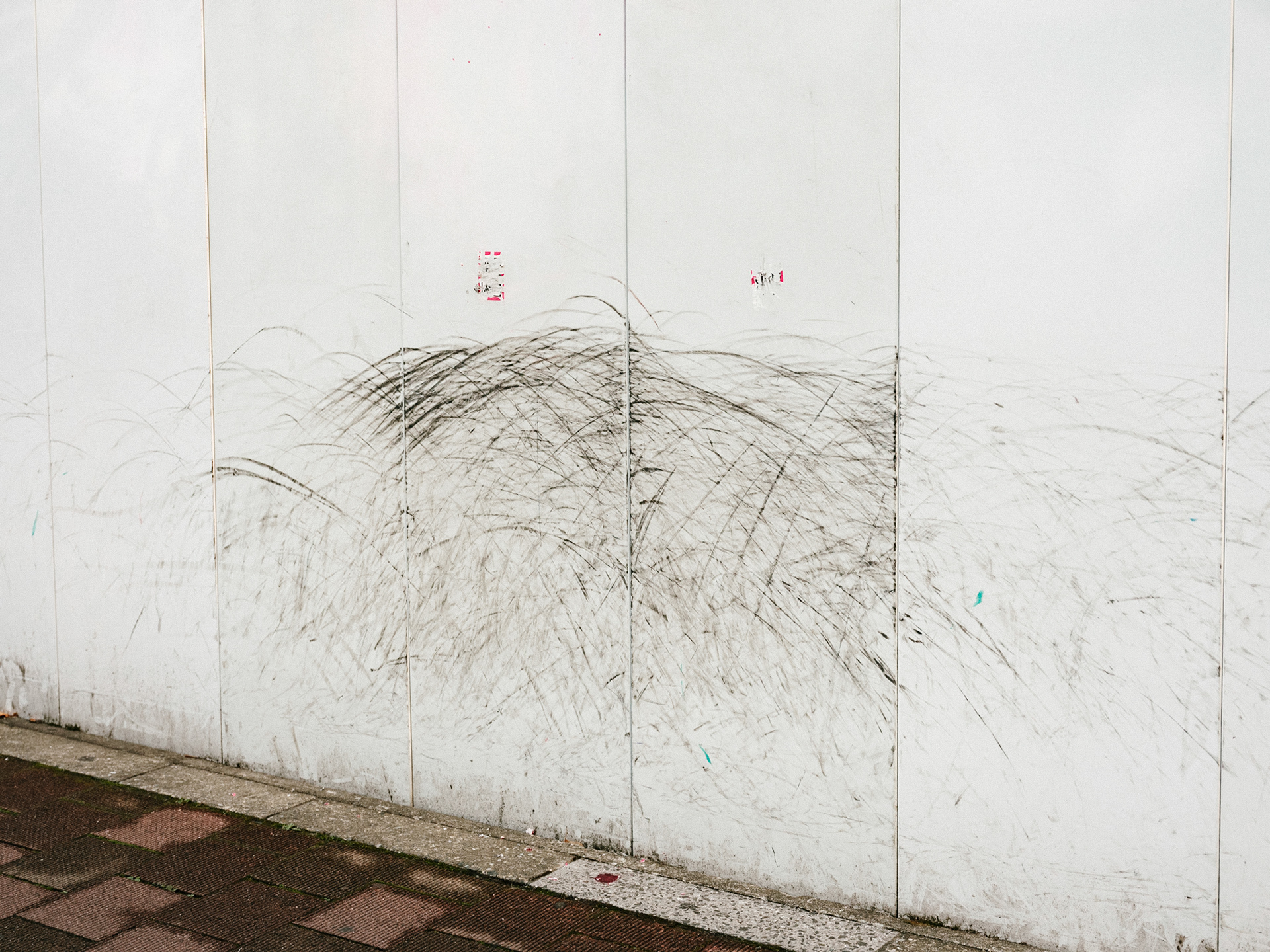


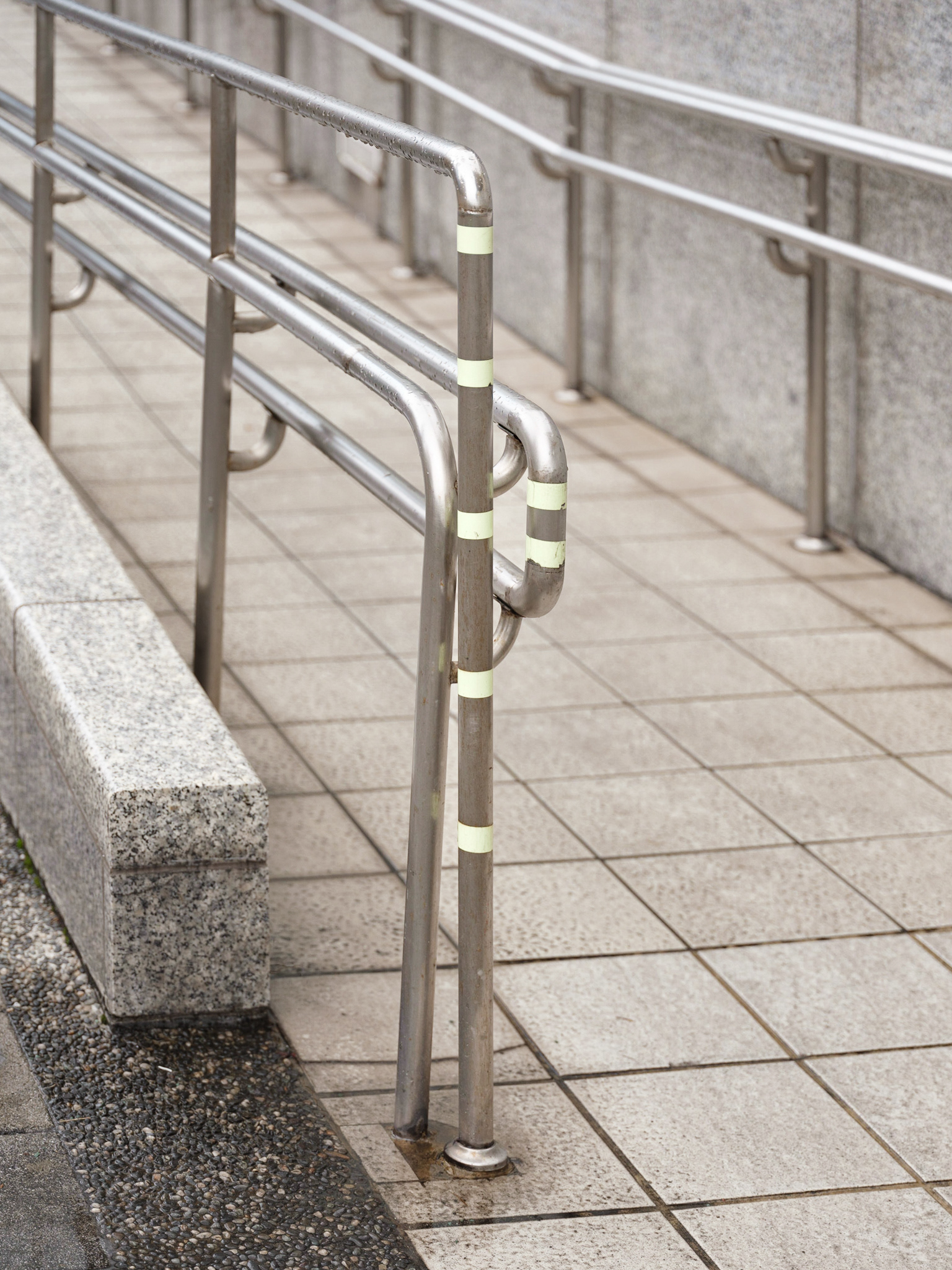



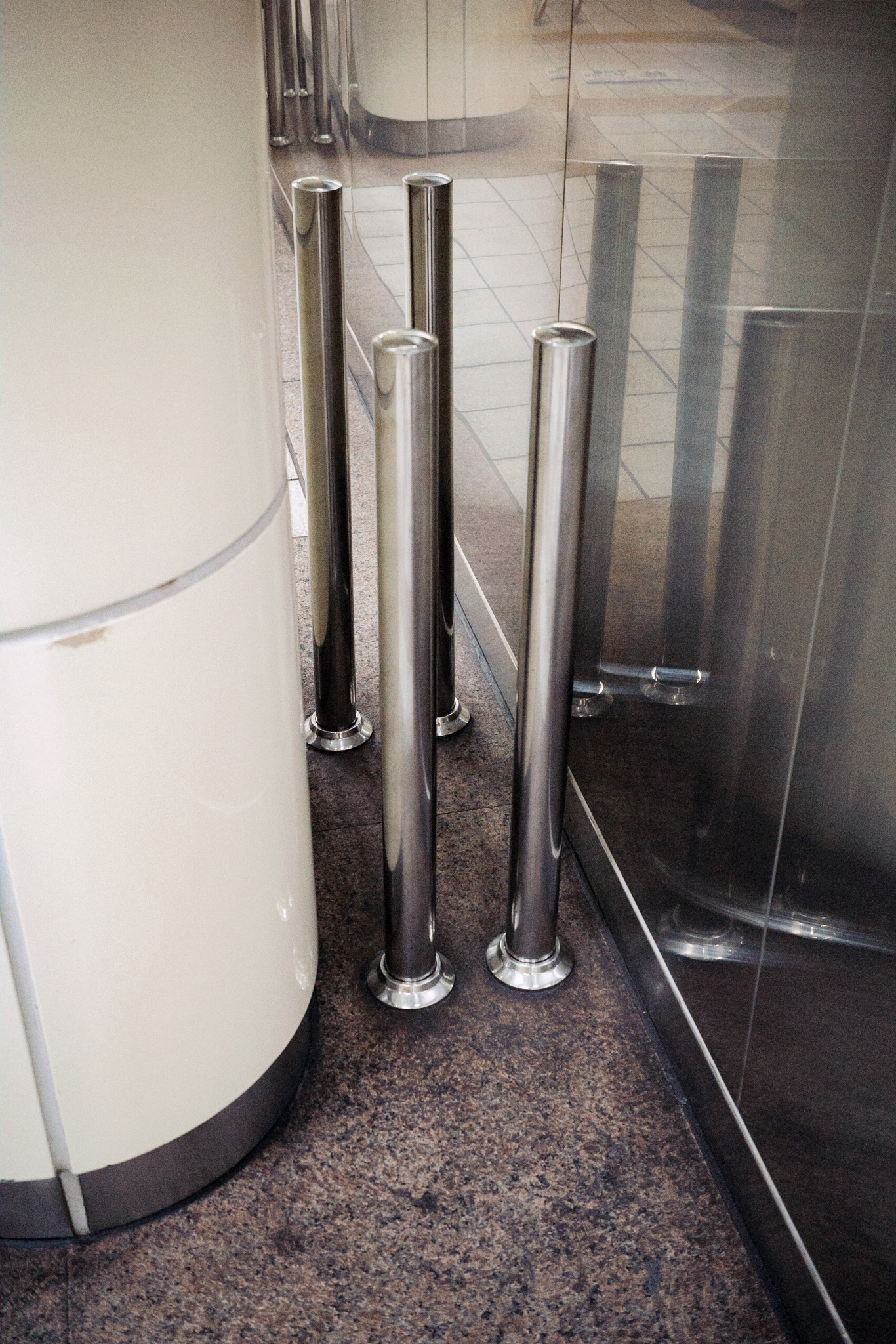

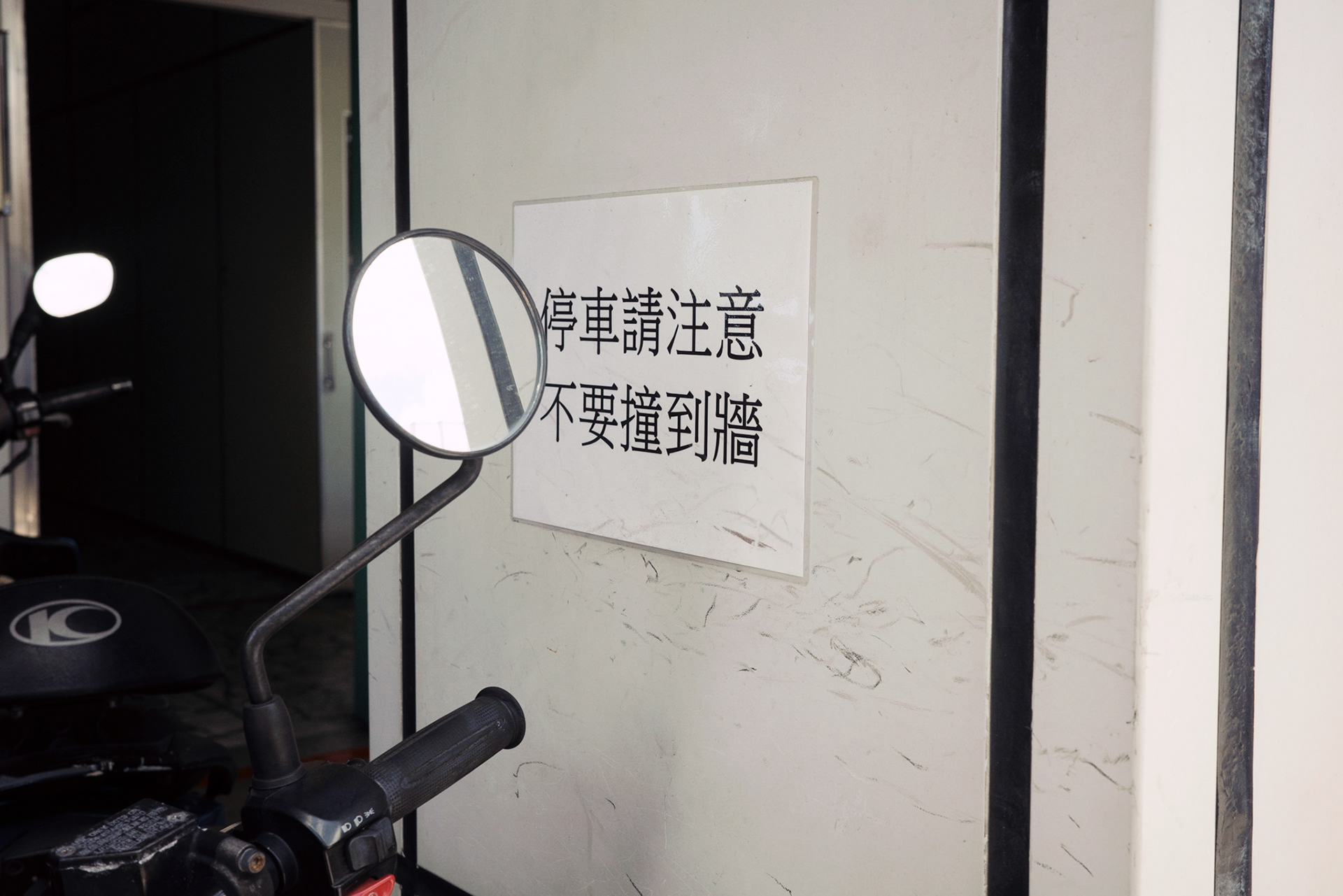
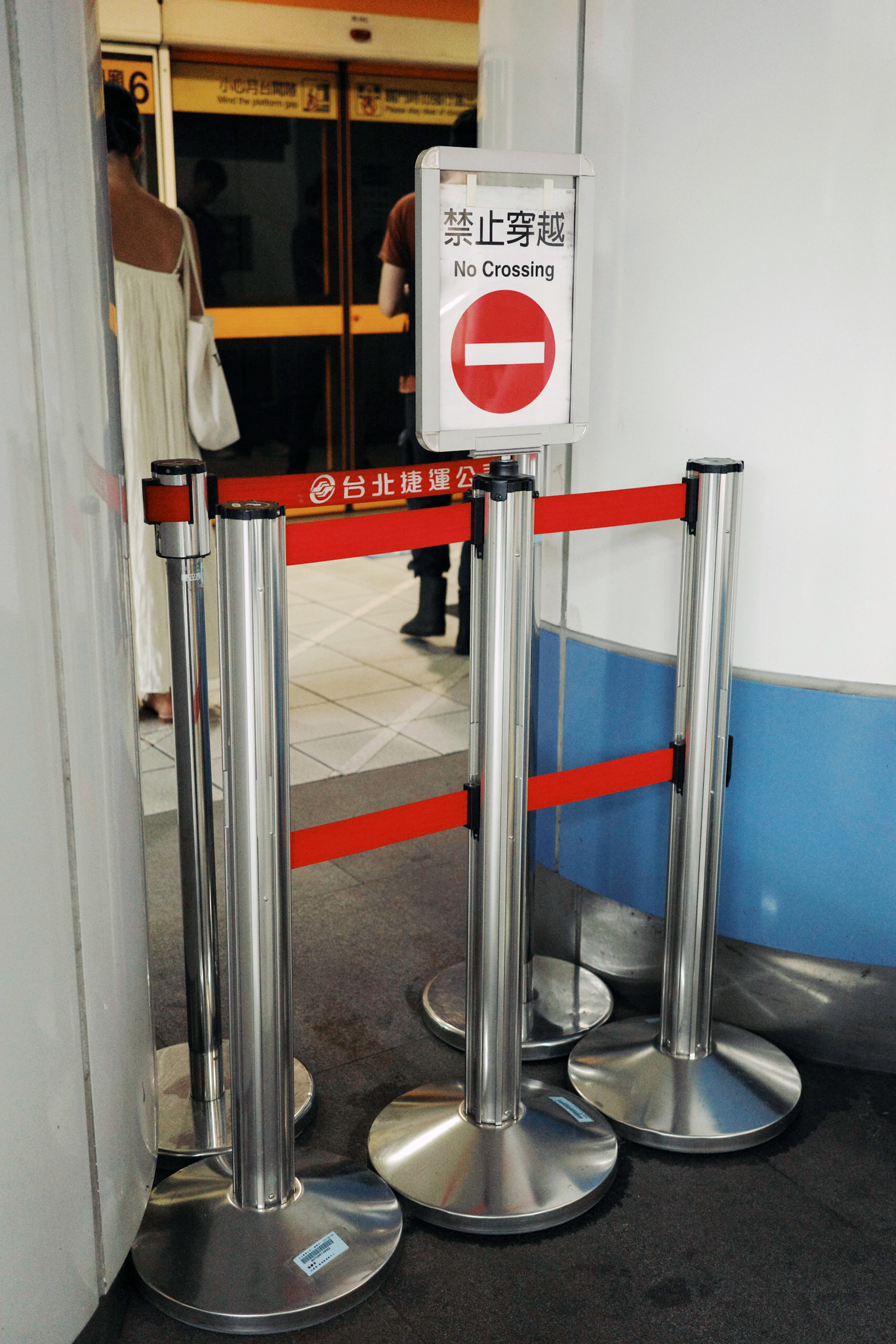


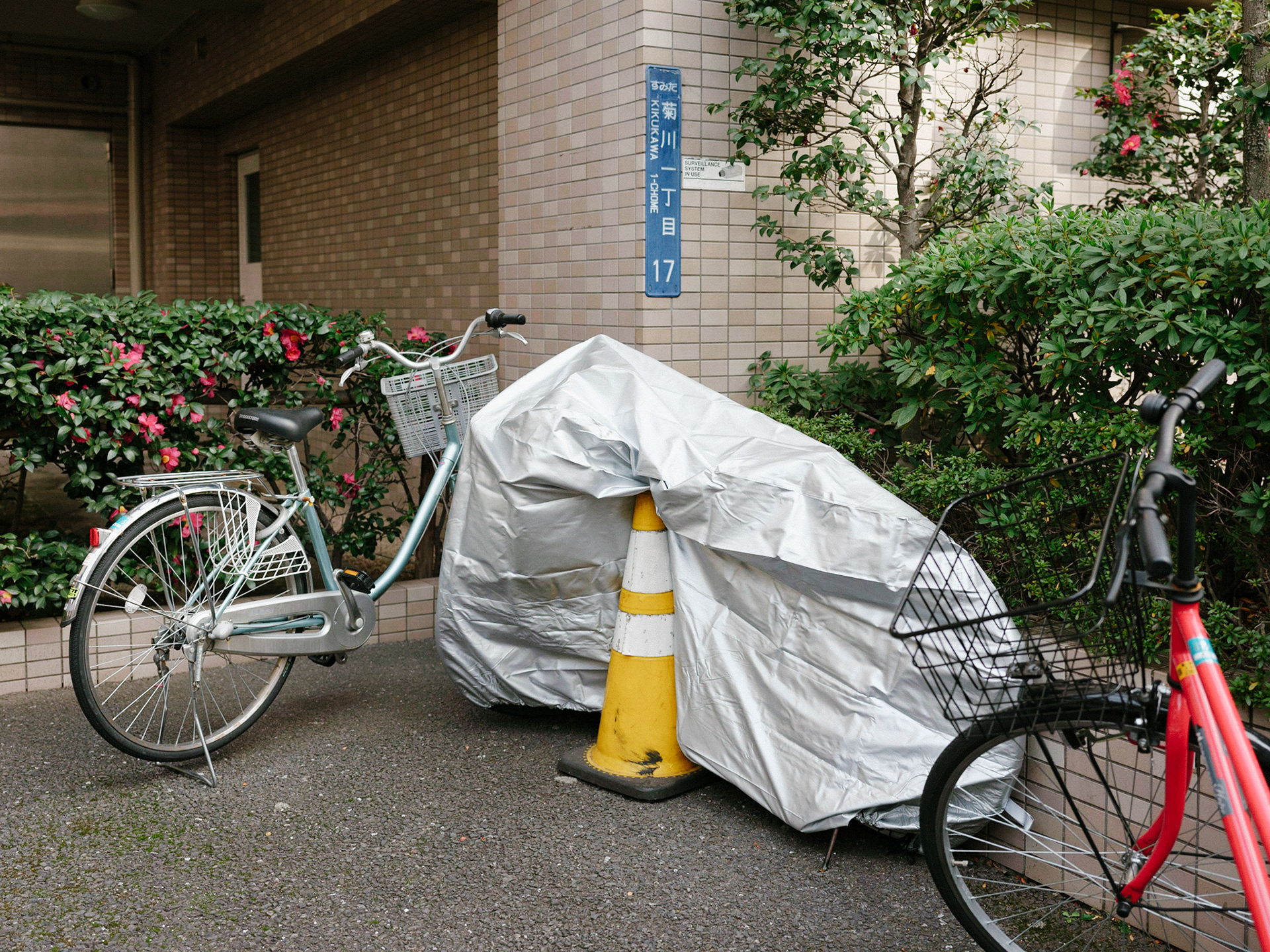
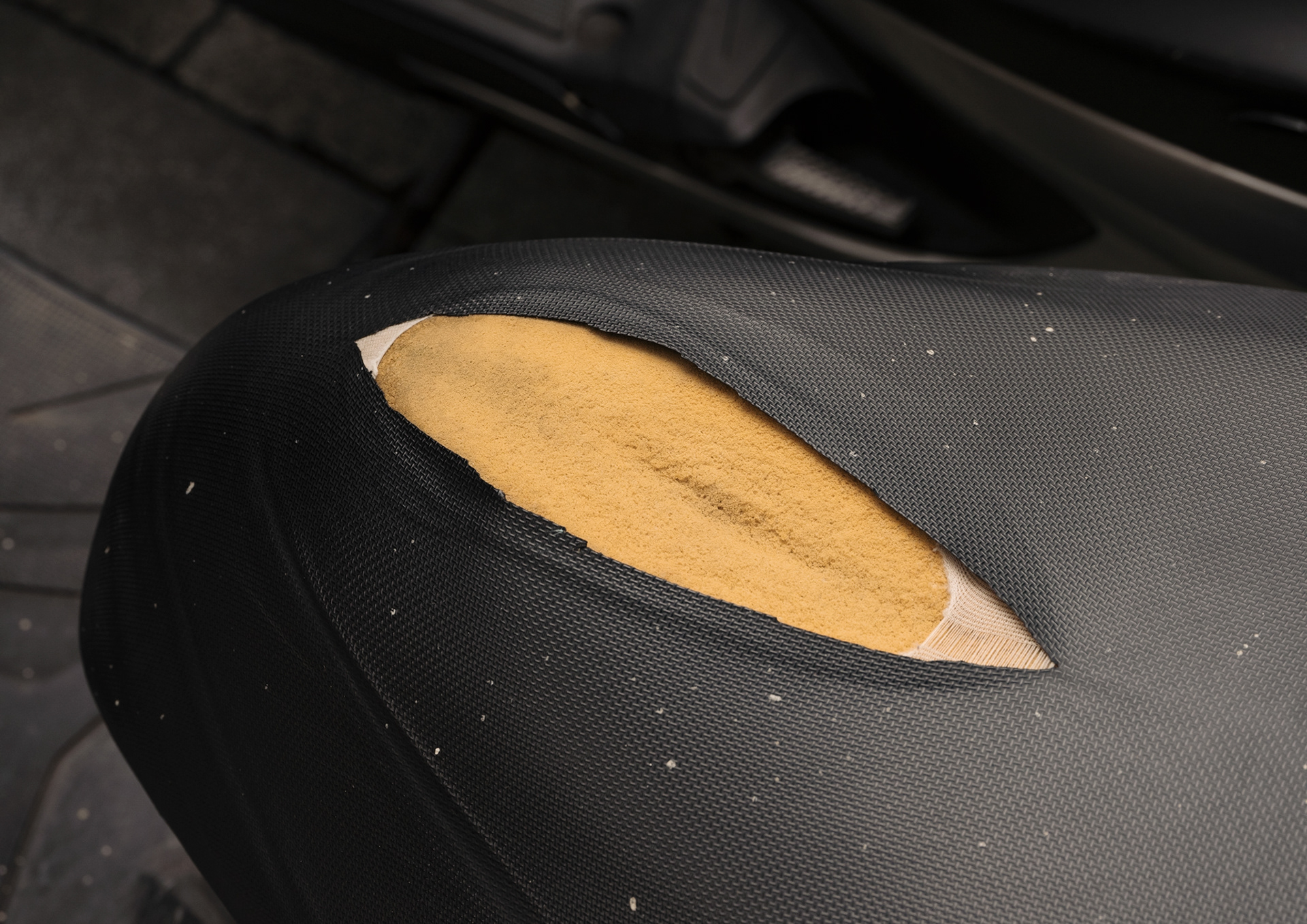

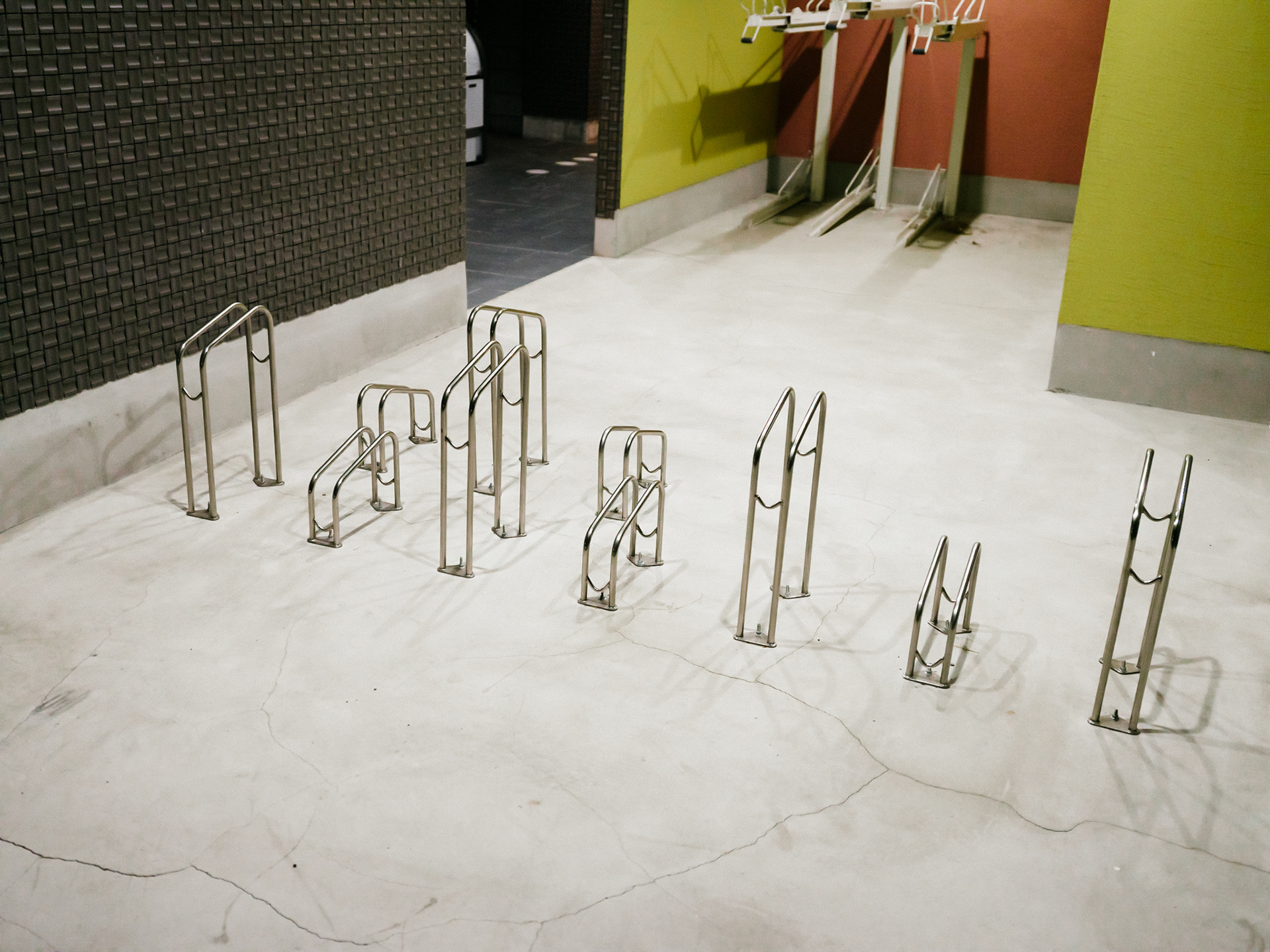
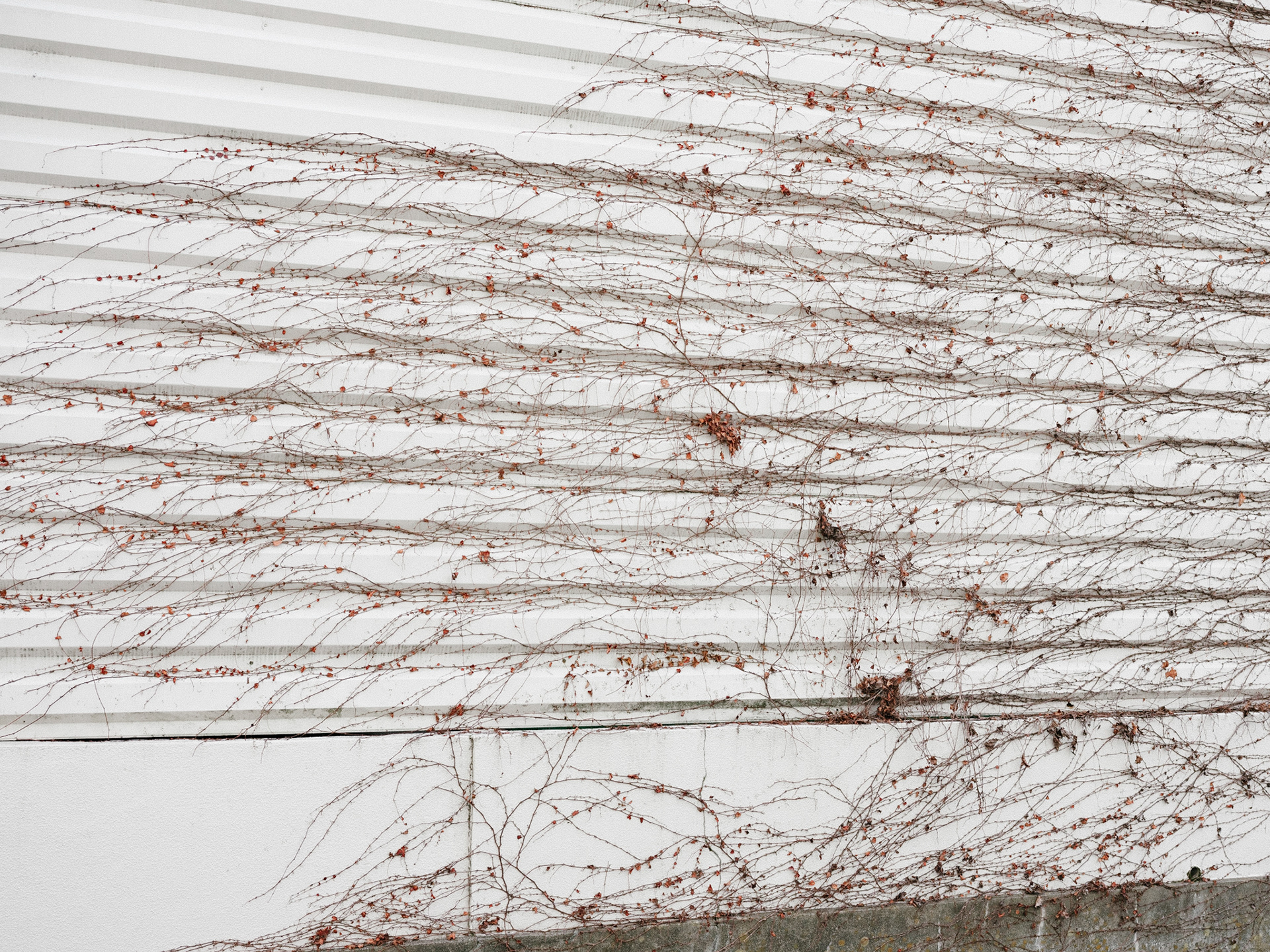
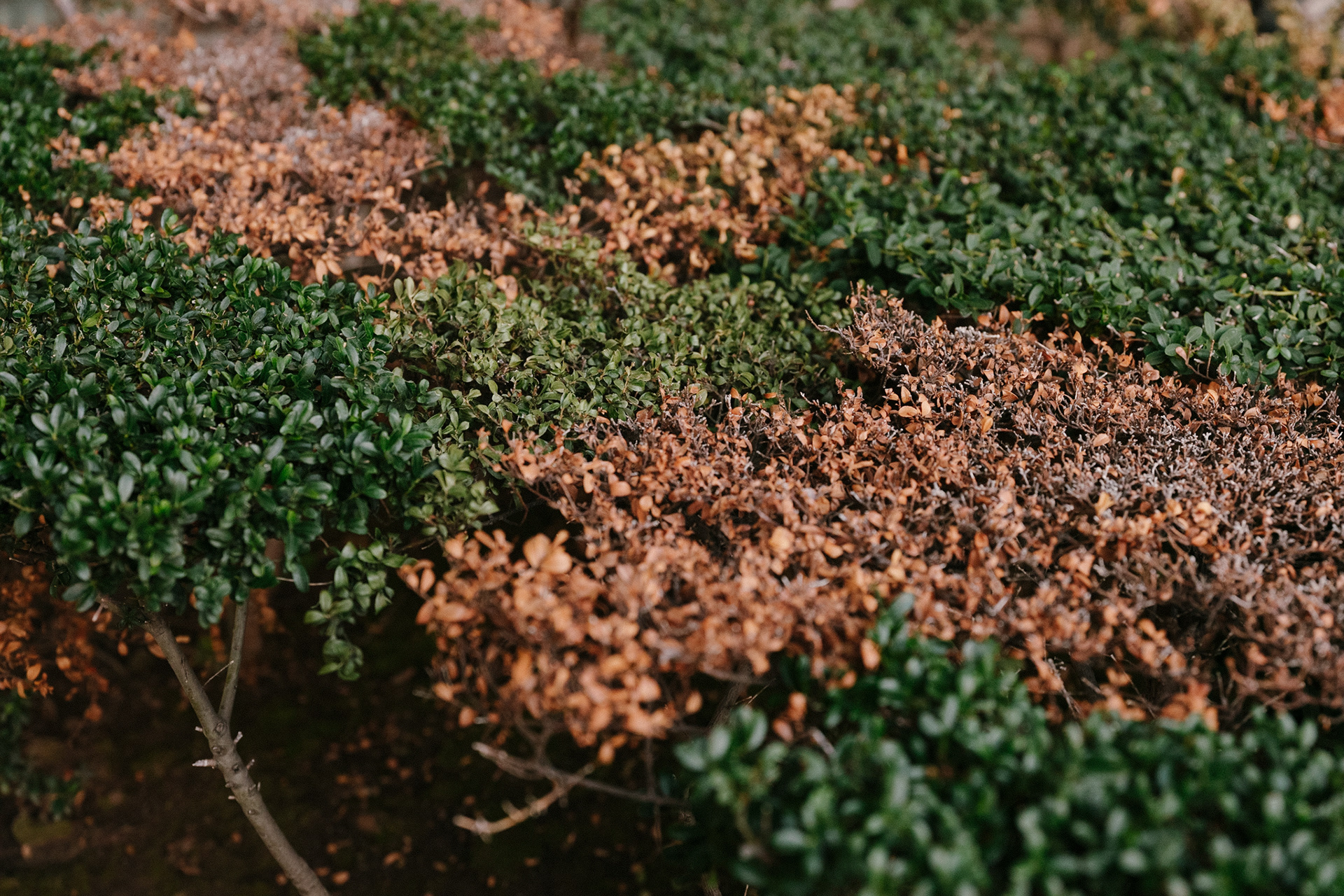
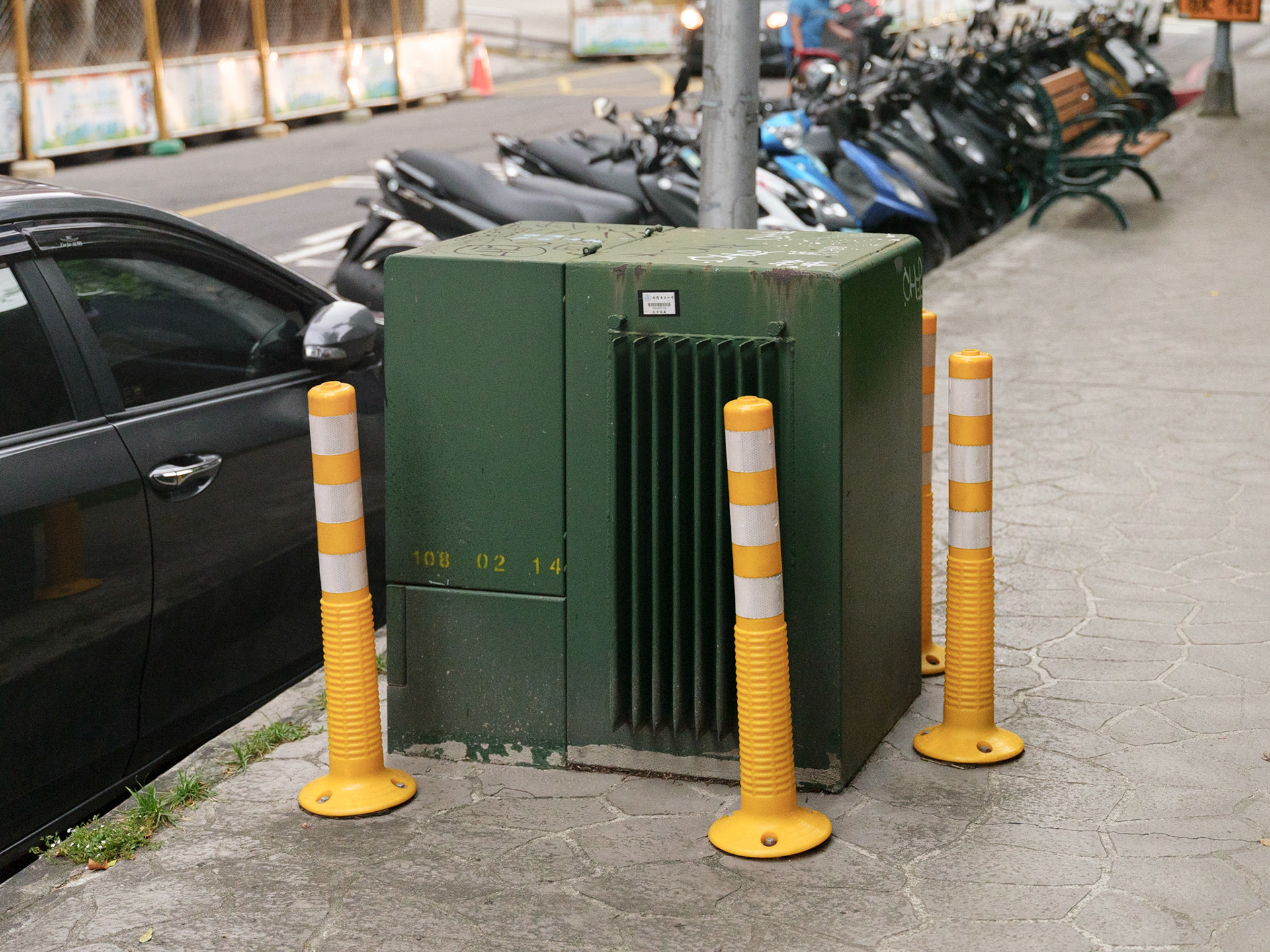
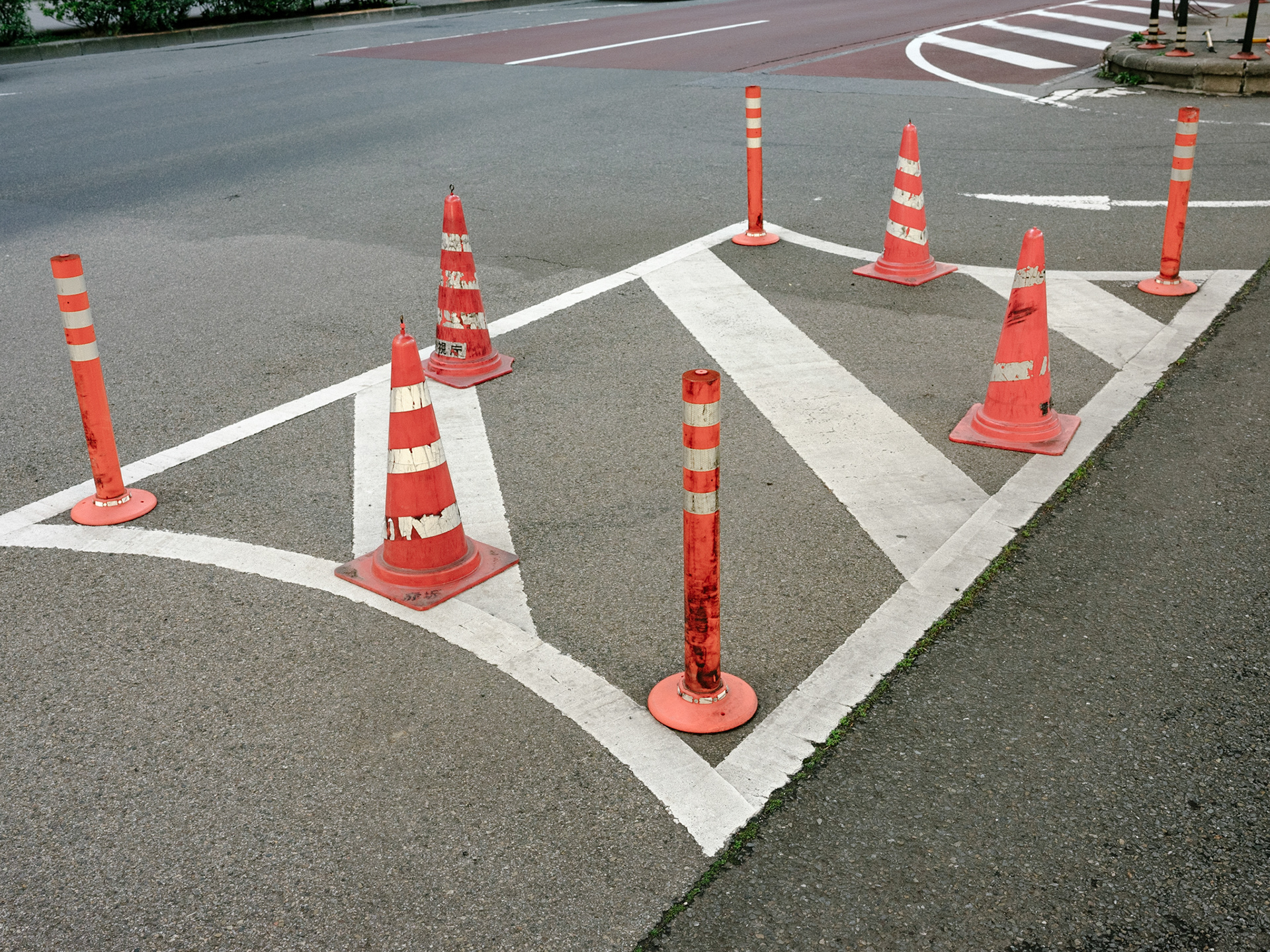
Installation view:

@王士原
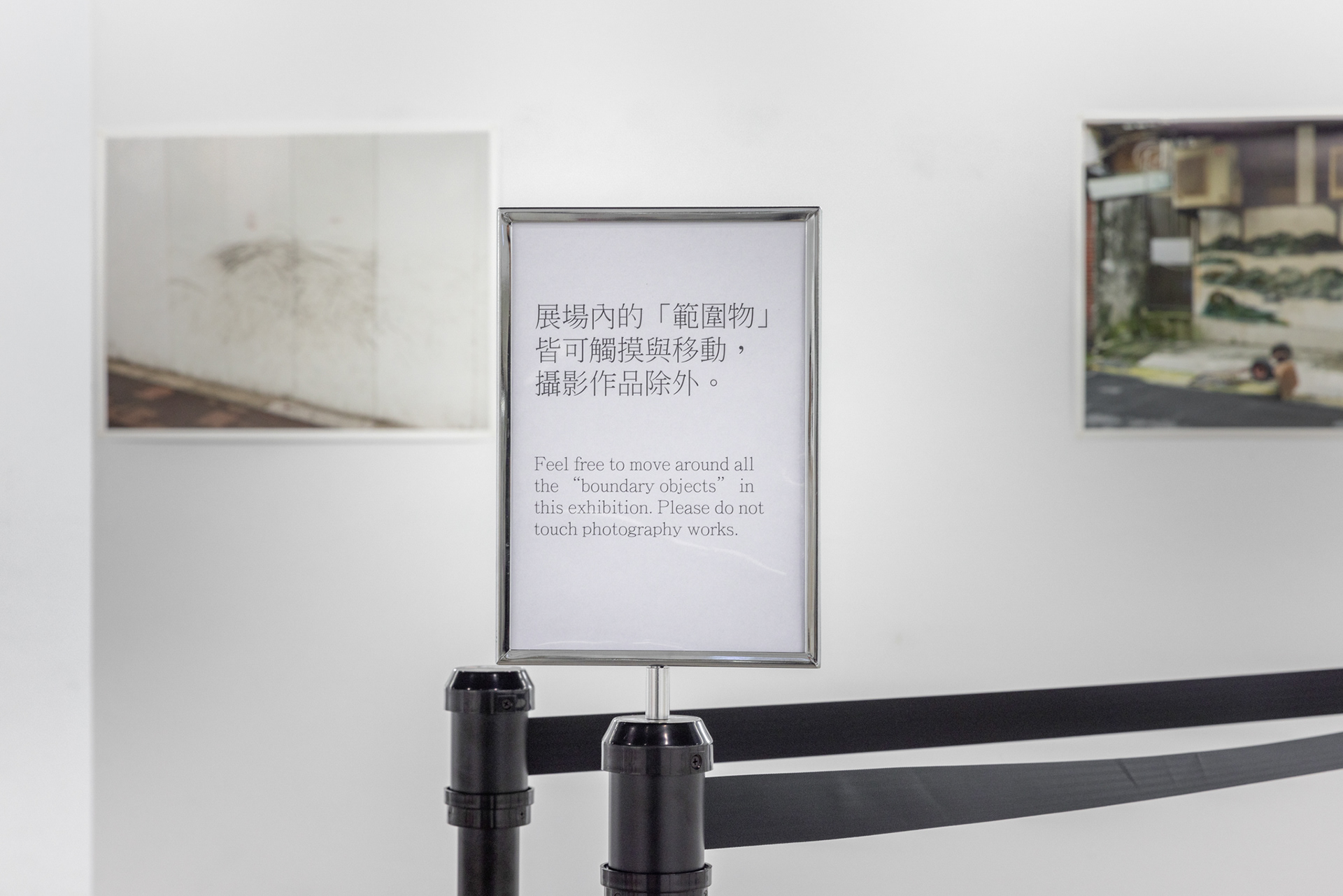
@王士原

@王士原
